Best digital pianos 2025: I'm a professional piano and music gear reviewer, and these are my top picks
With a decade of experience selling and reviewing pianos, these are my recommendations for the very best digital pianos from Yamaha, Roland, Casio, and Korg at all price points - including full reviews and video demos
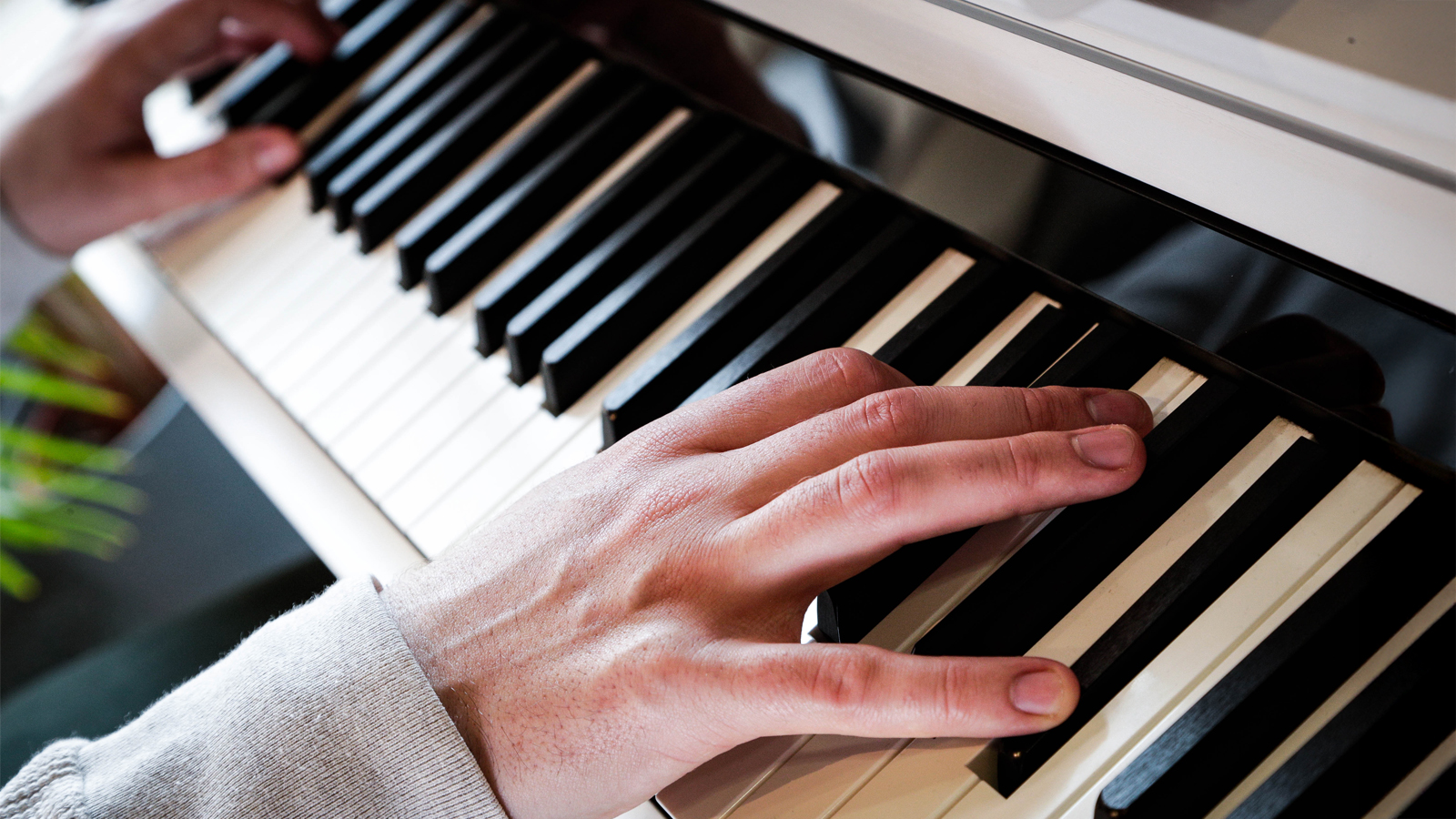
I think we're currently living in the golden age of digital pianos. The technology housed in these digital instruments is improving by the year, meaning the tone and feel are edging ever closer to their acoustic brethren.
In this article, I’ll be your guide through the wonderful world of digital pianos. I’m a former music retail manager, and I spent nearly 10 years in that part of the industry, helping musicians find the ultimate digital piano. I have since shifted away from selling musical instruments and now use my years of experience writing for MusicRadar, reviewing the latest models and hand-crafting buyer's guides.
My comprehensive guide will break down what I believe are the best digital pianos available right now in 2025, from high-end instruments that will take centre place in any room to small, discrete pianos that won't take up too much space. Currently, my top pick is the stunning Yamaha Clavinova CLP-885. This gorgeous piano perfectly blends charming good looks with fantastic playability and Yamaha’s world-famous build quality to create the best digital piano on the market right now. If you're a beginner, I highly recommend the Casio Privia PX-S110. This compact model is extremely affordable, well-crafted, and comes with a light yet satisfying key action.
To ensure you’re making an informed decision, I’ve included playing demos of some of the pianos in this guide. For the videos, one of our piano experts, Quentin Lachapèle, played the same three pieces across three voices on each instrument.
If you're new to digital pianos, I have also included in-depth FAQs further down the guide to help you through the process of purchasing your first piano.
Quick list
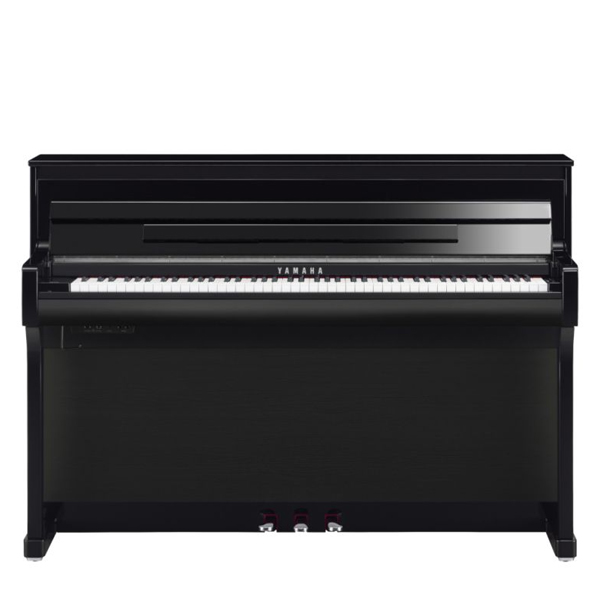
The groundbreaking 800 series features the latest technology developed by Yamaha to perfectly recreate the feel and sound of an acoustic piano and is easily one of our favourite pianos on the market.
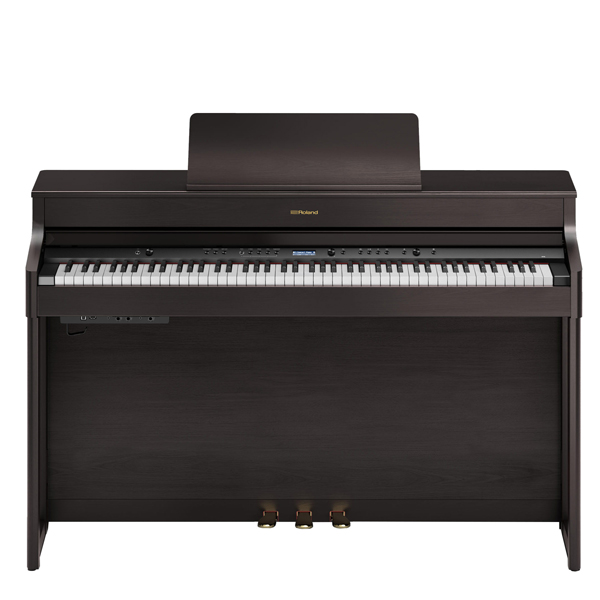
If Roland is known for one thing - it’s their outstanding sounds, and the SuperNATURAL sound engine proves Roland knows how to replicate the complex sound of a piano.
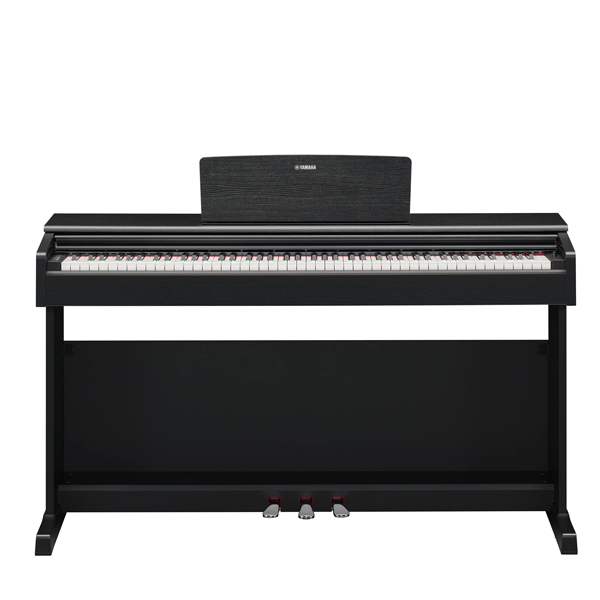
The successor to Yamaha’s incredibly successful Arius YDP-144, the YDP-145 delivers a stunning main piano sound derived from a real, top-of-the-line Yamaha CFX acoustic grand piano, mated to a brilliantly playable Graded Hammer Standard keyboard.
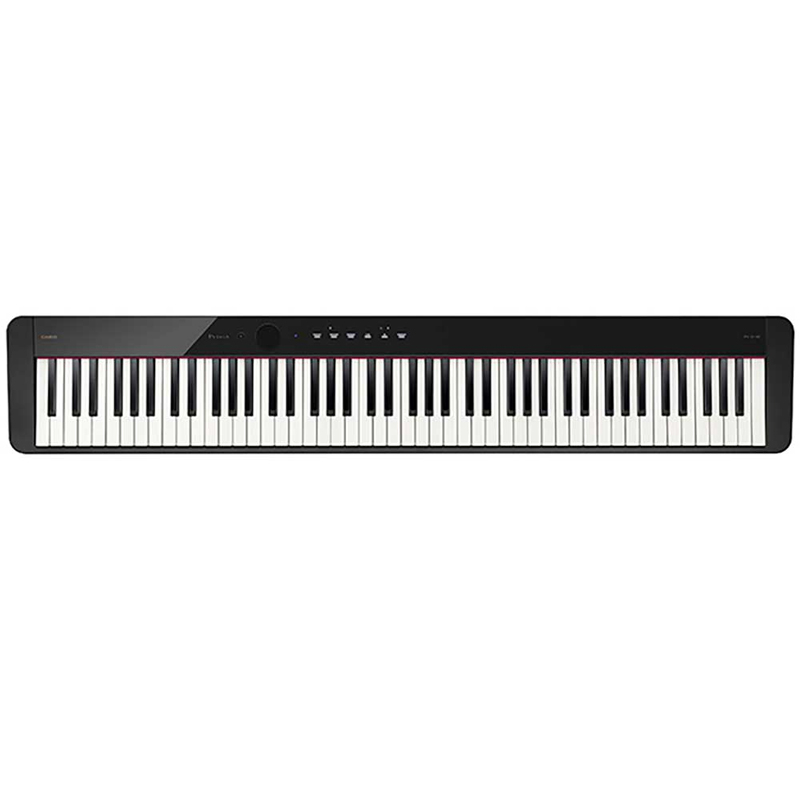
The eagerly awaited upgrade of the S1000, the new PX-S1100, builds on its predecessor by adding the modern features today’s budding pianists demand. This 88-note, fully weighted-key piano is perfect for aspiring players looking for an affordable instrument that doesn’t scrimp on quality.
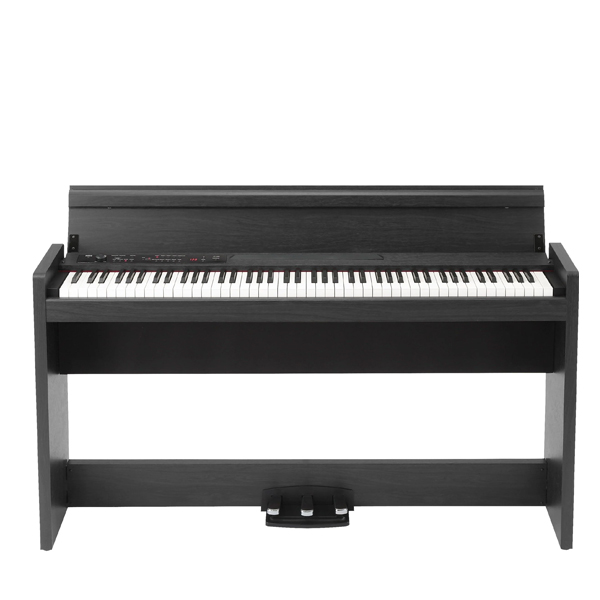
Housed inside this tiny cabinet is the acclaimed RH3 (Real Weighted Hammer Action 3) key action. This superb action is, in fact, graded, meaning all the weight of the keys changes as you move from the lower to the higher notes, just like a real piano.
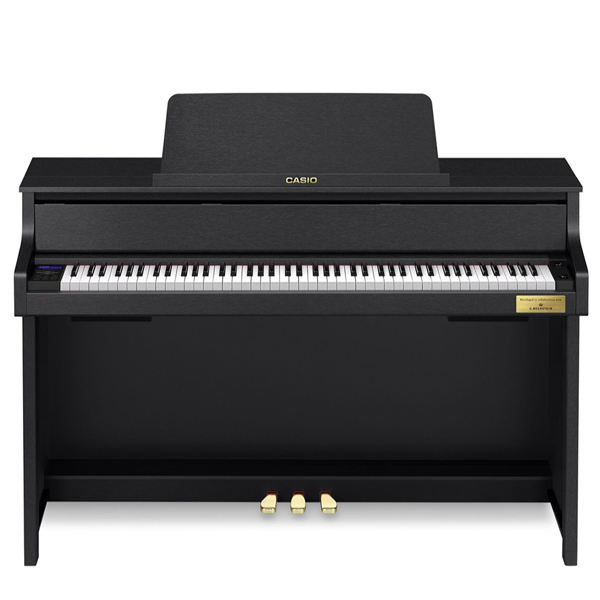
We absolutely loved the tactile feedback of the hammers moving inside the body of the piano, as it's exactly what you come to expect from an acoustic piano. This feature ultimately leads to a more satisfying playing experience that you don't get on other pianos on the market.
Load the next 2 pianos ↓
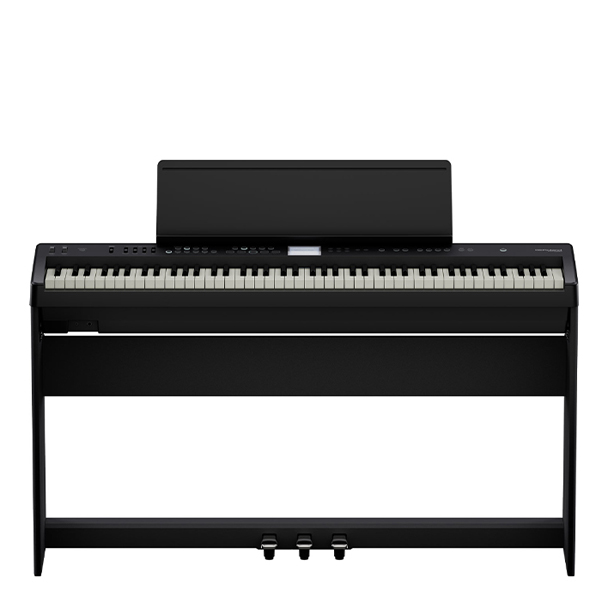
The FP-E50 goes above and beyond with its additional sounds. Roland’s latest ZEN-Core engine is in play - yes, it's the same one that’s used in the company’s high-end synths! - and, as well as the expected acoustic and electric pianos, strings, organs and pads, you also get a multitude of modern synth tones and drum sets.
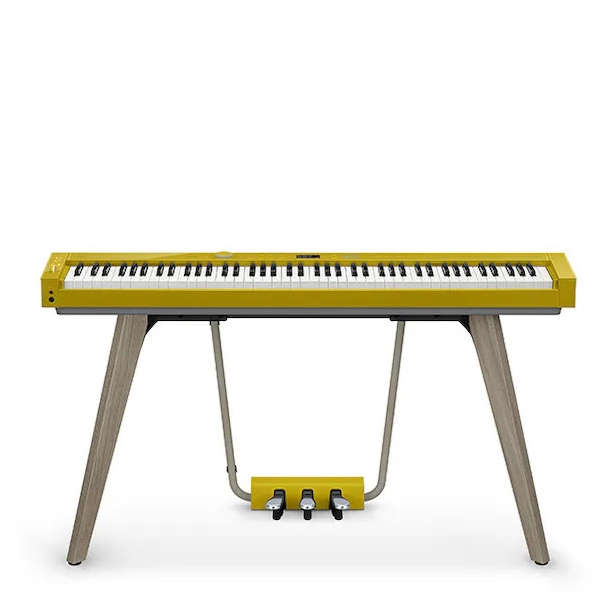
Now, it’s not all style over substance, as this piano more than delivers on playability. Casio’s Smart Hybrid Hammer Action Keyboard feels incredibly responsive and offers a very satisfying playing experience, while the Multi-Dimensional Morphing AiR Sound Source delivers a massive range of tones.
Best digital piano overall
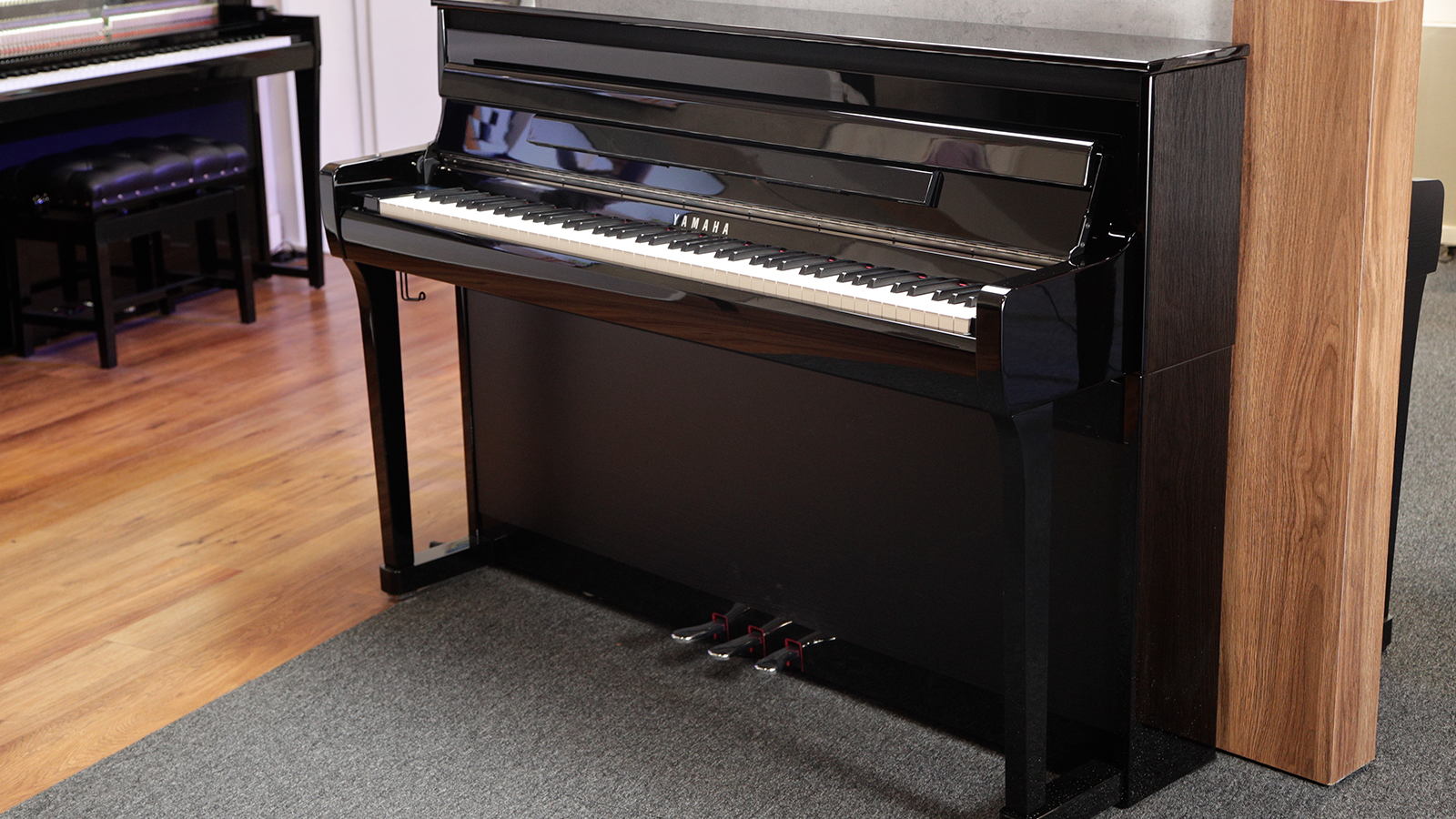
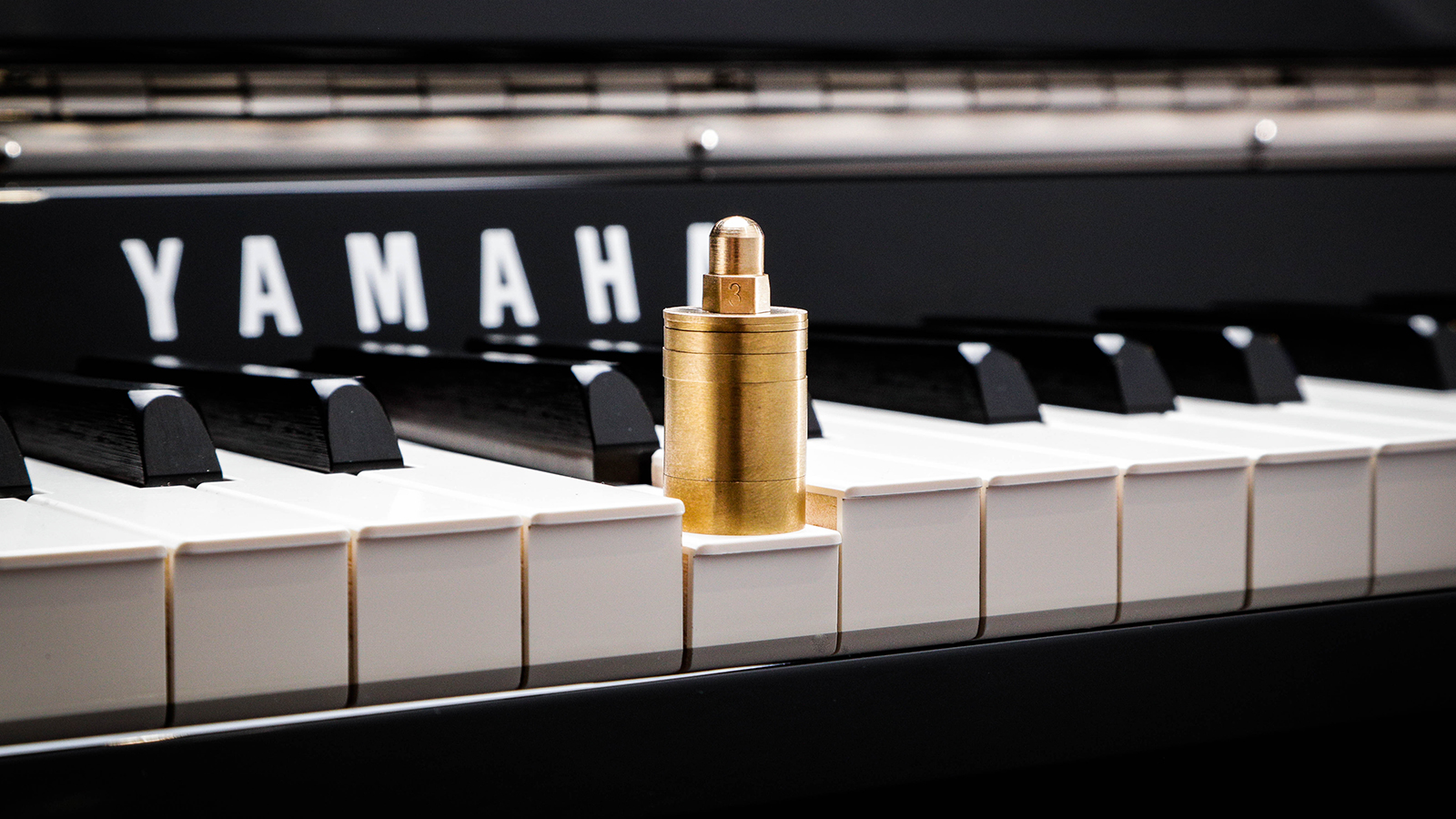
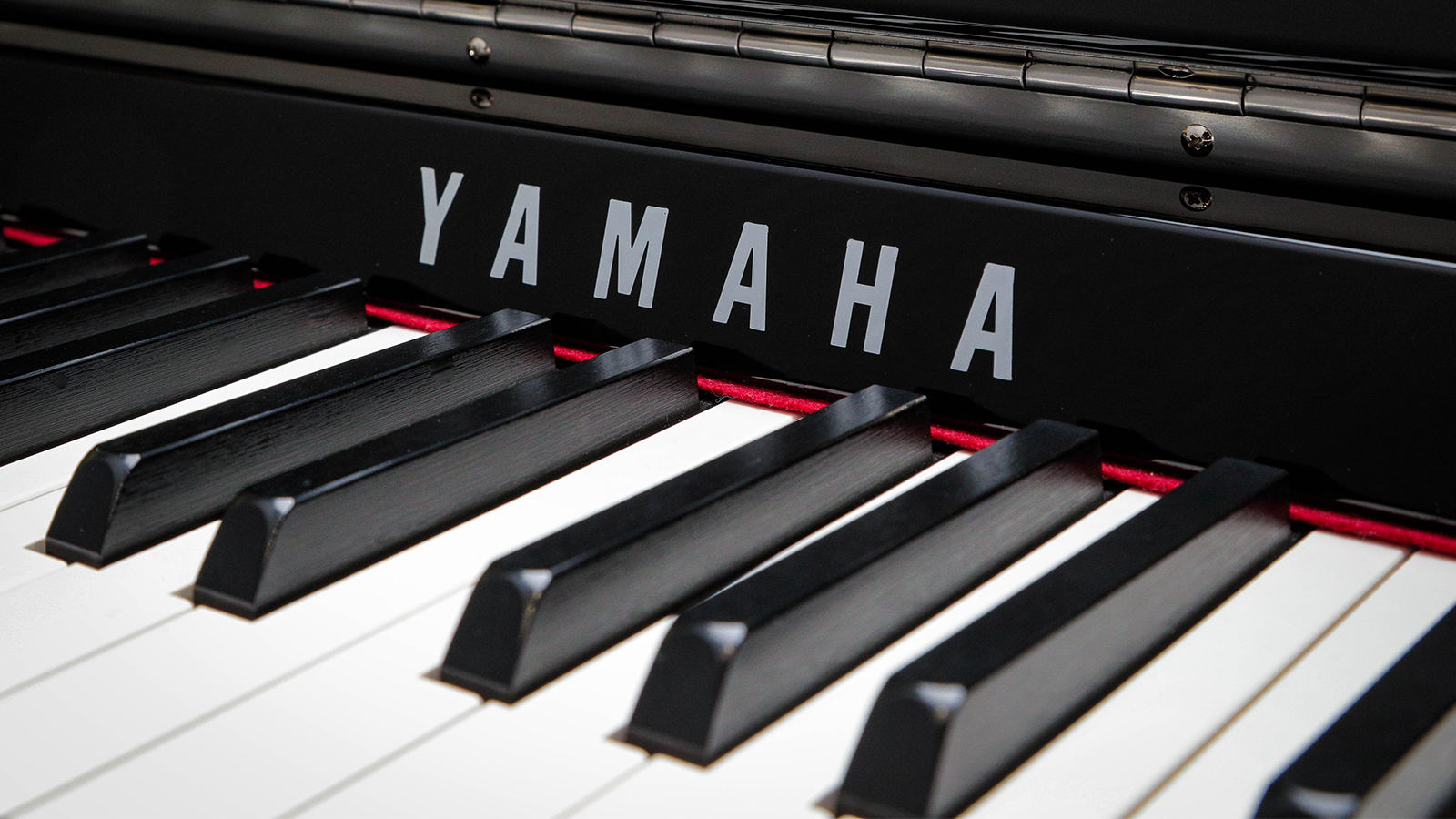
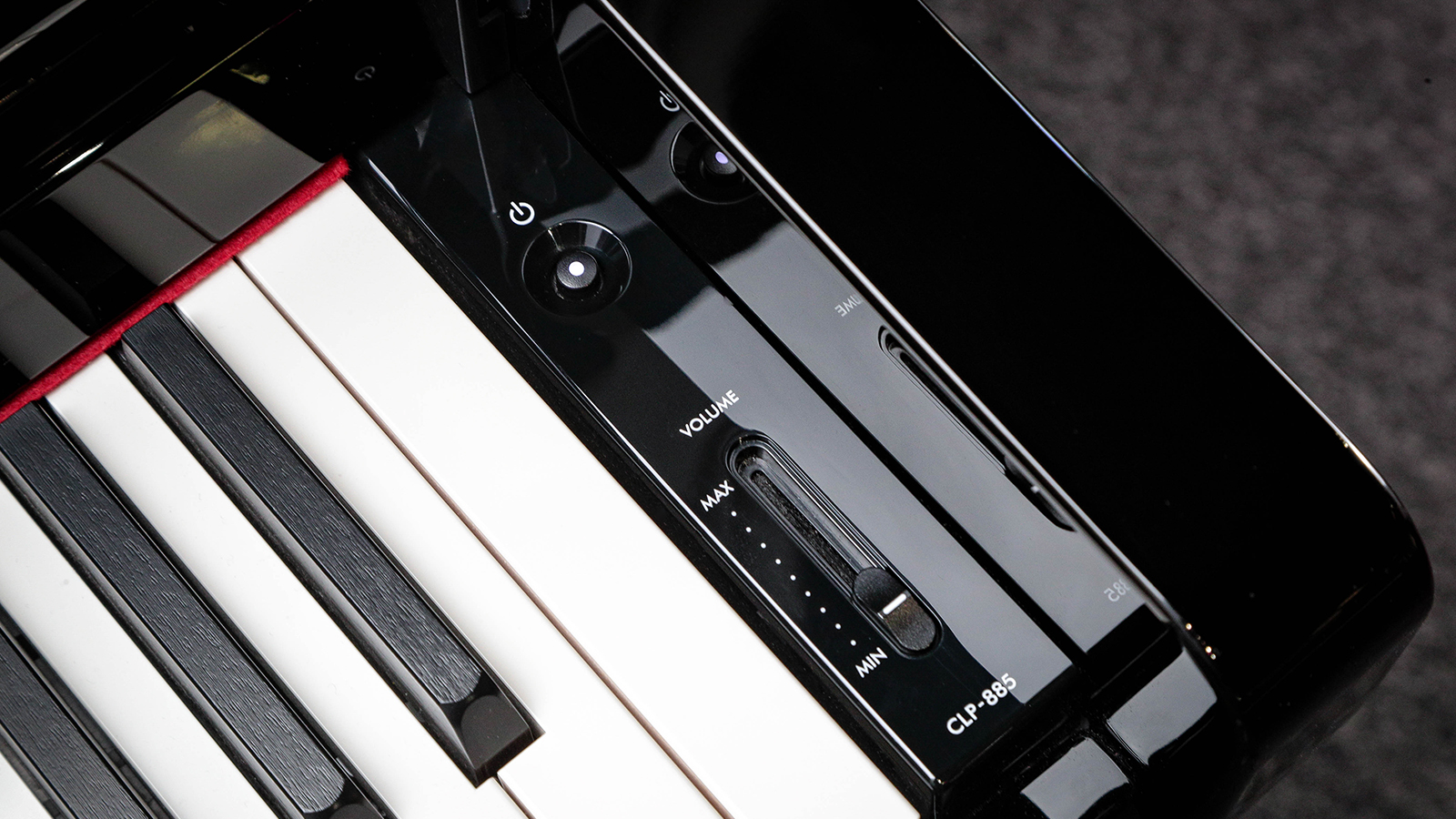
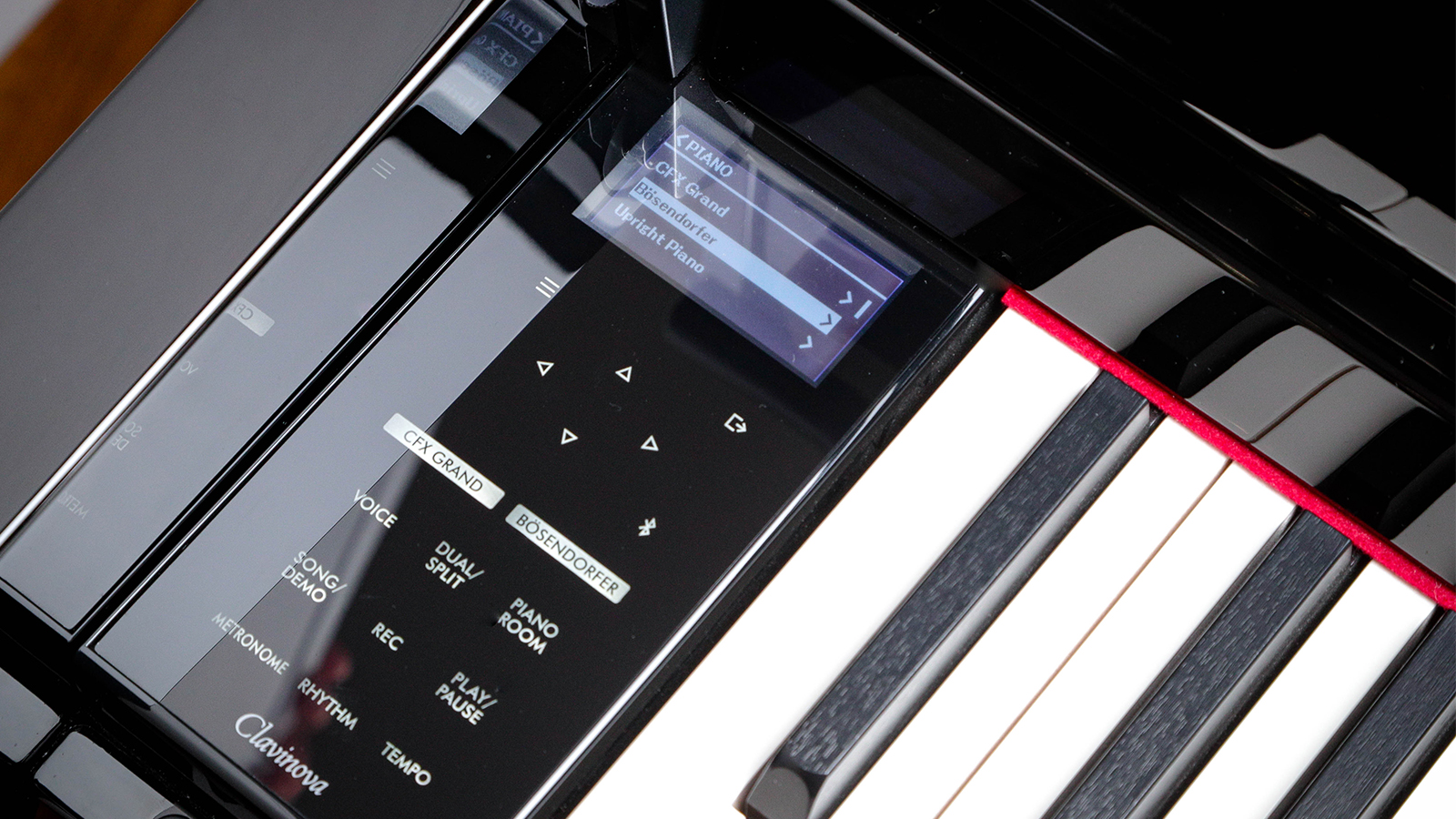
Specifications
Reasons to buy
Reasons to avoid
✅ Buy if you are looking for the ultimate family piano: The Clavinova CLP-885 looks the part and has the sound and playability to match. This piano will happily take pride of place in any home and is our pick for the best digital piano overall.
❌ Avoid for very young players: Yamaha pianos can have a heavier key action when compared to the likes of Casio and Roland, so it may not be the best option for very young kids.
Build: The Clavinova range made its debut way back in 1983, and it’s fair to say that the technology has progressed significantly since then! While the original Clavinova digital pianos looked somewhat piano-like and sounded great for the time, the new 800 series is in a completely different league. This piano feels incredibly sturdy, robust and impeccably made.
Sound: The remarkable thing about this piano is its ability to make you forget it's an electronic instrument. The sound emanating from the cleverly concealed speakers is so authentic that, combined with the skillfully designed keyboard action, it genuinely feels like I'm sitting at an acoustic piano - and a high-end one at that.
This piano offers two exquisite grand piano sounds. The primary sample, sourced from a Yamaha CFX Concert Grand, is outstanding. It captures a rich, bright tone and a delicate ambience, all thanks to Yamaha's Virtual Resonance Modelling technology.
Performance: The groundbreaking 800 series features the latest technology developed by Yamaha to perfectly recreate the feel and sound of an acoustic piano. In my tests, I found the GrandTouch key action with its Linear Graded Hammer emulation offers a truly authentic touch that will easily convert anyone sceptical of digital pianos.
As you’d expect, digital pianos offer a wealth of features that simply aren’t possible with a traditional acoustic piano. For example, the CLP-885 offers you the ability to connect your device via Bluetooth and play along with your favourite songs - or turn your piano into the best Bluetooth speaker in the house. You can also plug in a set of digital piano headphones, meaning the rest of your family doesn’t need to hear you attempt Für Elise one more time.
Looking for other options? Take a look at our guide to the best Yamaha digital pianos.
Test | Results | Score |
|---|---|---|
Playability | Excellent key action - may be too heavy for kids | ★★★★★ |
Sounds | Stunning tones | ★★★★★ |
Features | Great features, includes touchscreen control and Bluetooth | ★★★★★ |
Overall | Superb tone, great playability and the build to match | ★★★★★ |

"The CLP-885 sets a new standard for digital pianos, delivering a truly realistic playing experience, impressive acoustic sound, and premium craftsmanship, all packed into an authentic upright-like cabinet. It’s a high-end choice but worth every note!"
Read my full Yamaha Clavinova CLP-885 review
Best for sounds
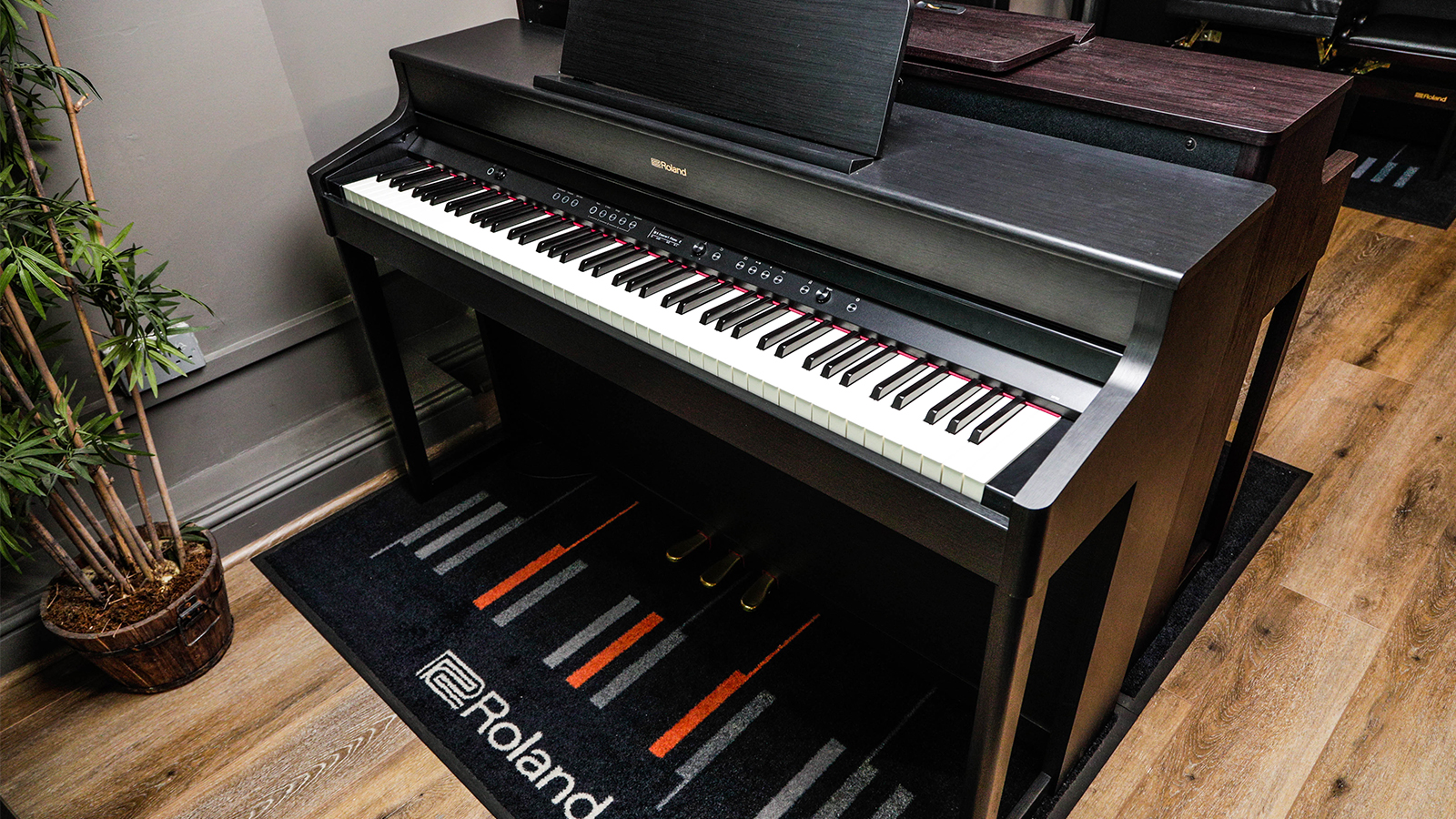
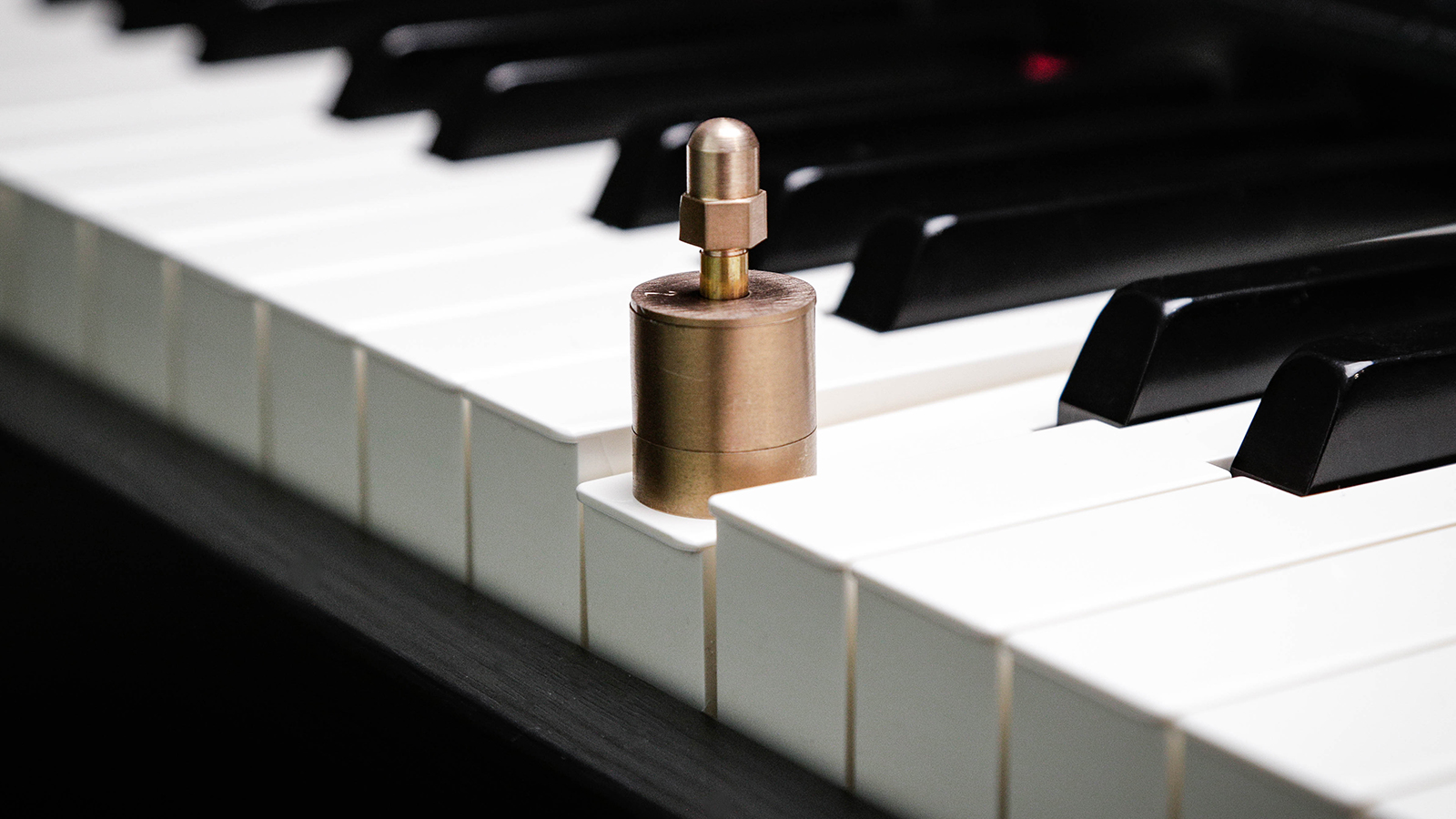
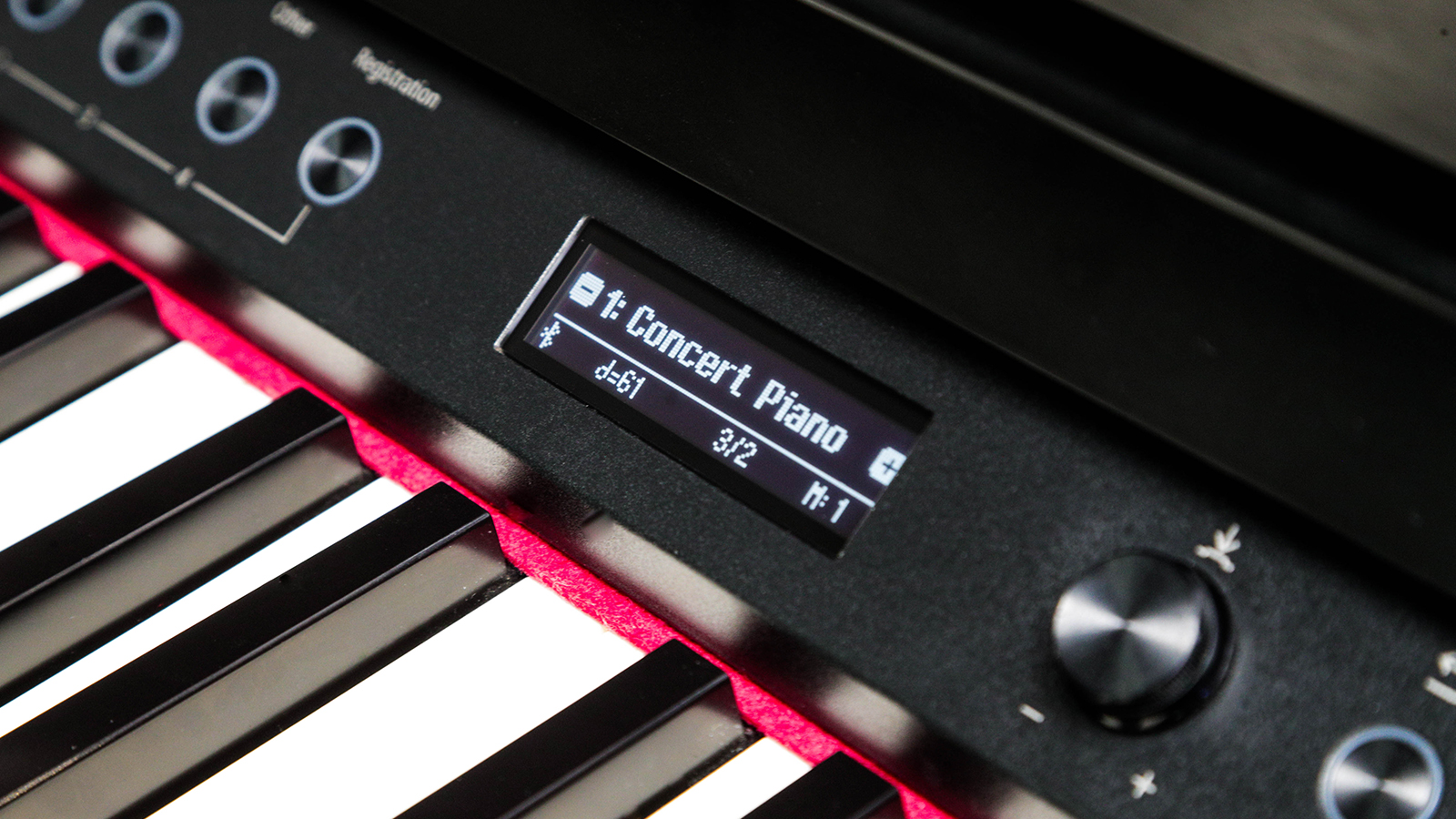
Specifications
Reasons to buy
Reasons to avoid
✅ Buy if you are looking for the best sound: This Roland piano comes loaded with an outstanding sound engine, making it one of the best-sounding pianos on this list.
❌ Avoid if you are tight on space: While this piano isn't the largest on this list, it's still fairly big. There are smaller Roland pianos available, so if you are tight on space, it may be worth checking out the F107.
Build: Available in four different wood finishes - light oak, dark rosewood, charcoal black and white - the HP702 resembles a somewhat shortened traditional upright acoustic piano, with the exception of high-tech digital controls, of course. This elegant-looking piano will become the centre point of any room it's in, and thankfully, I think it's well-made enough to stand up to years and years of frequent play.
Sound: If Roland is known for one thing - it’s their outstanding sounds, and the SuperNATURAL sound engine proves Roland knows how to replicate the complex sound of a piano. This incredibly sophisticated tone engine not only delivers fantastic piano sounds but a whopping 324 voices, as well as limitless polyphony (when using piano category sounds).
Performance: It’s almost a given that it is going to sound great, it’s made by Roland, but how does it feel? Well, the PHA-4 Standard keyboard offers a great playing experience. The action isn’t as heavy as the Yamaha and isn’t as light as the Casio, so it’s perfect for players seeking the middle ground. The textured keys lend an extra level of authenticity and feel great under the fingers.
So if you’re looking for a terrific-sounding digital piano that won’t completely break the bank, then it’s worth considering the Roland HP702. Read our guide for more top-choice Roland digital pianos.
Test | Results | Score |
|---|---|---|
Playability | PHA-4 Standard keyboard action | ★★★★☆ |
Sounds | SuperNATURAL sound is engine is one of the best | ★★★★★ |
Features | Bluetooth connectivity and Roland Piano app | ★★★★★ |
Overall | This is easily one of the best sounding digital pianos on the market | ★★★★½ |

"If you want a great-sounding, cutting-edge digital piano with an elegant, traditional look and a great key action, the HP702 needs to be somewhere near the top of your list. Throw in compatibility with Bluetooth and the Roland Piano app for iOS and Android and you have a well-rounded and aesthetically pleasing product that makes an excellent musical centrepiece for your home, church or classroom."
Read more: Roland HP702 review
Best slimline
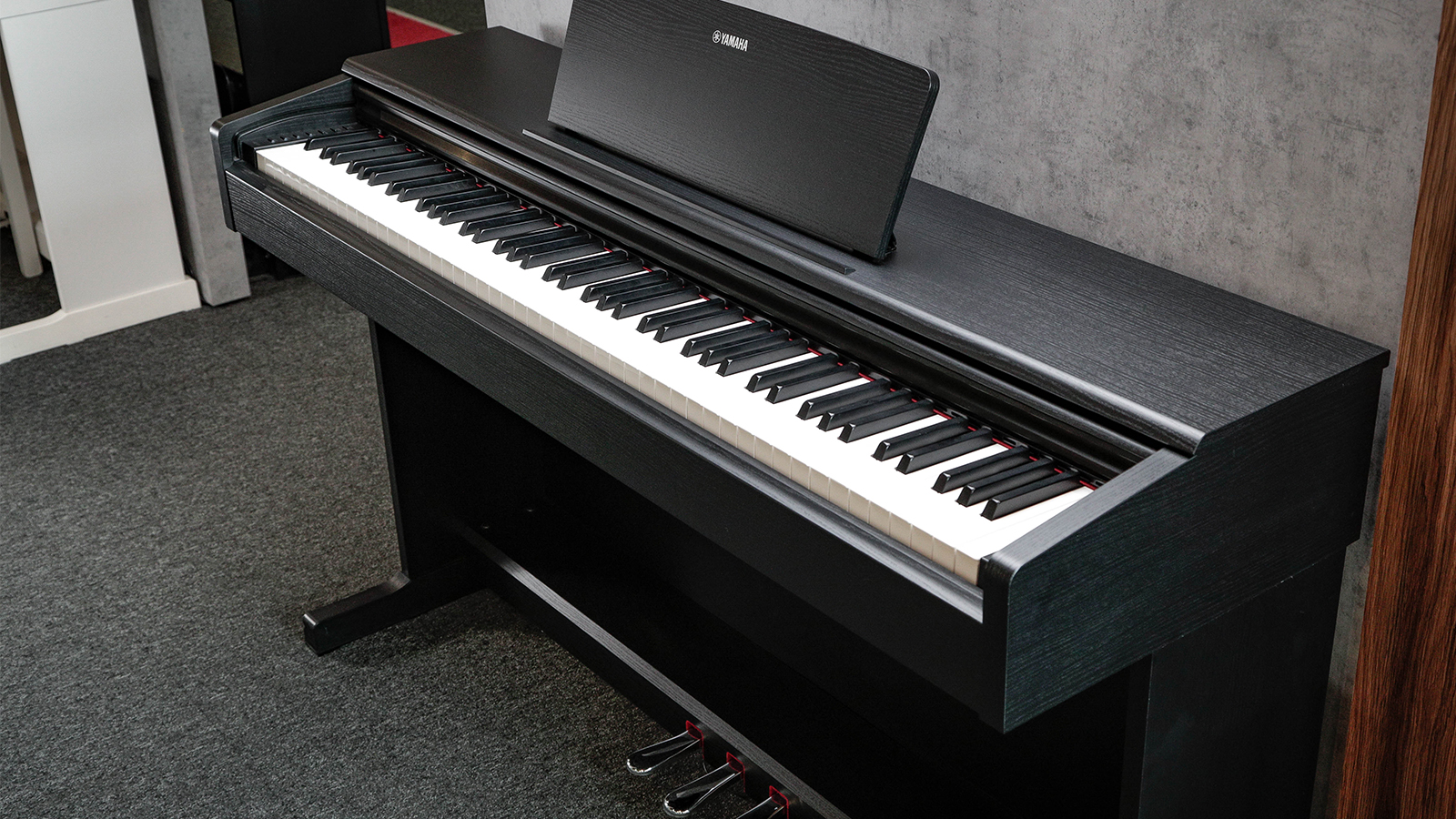
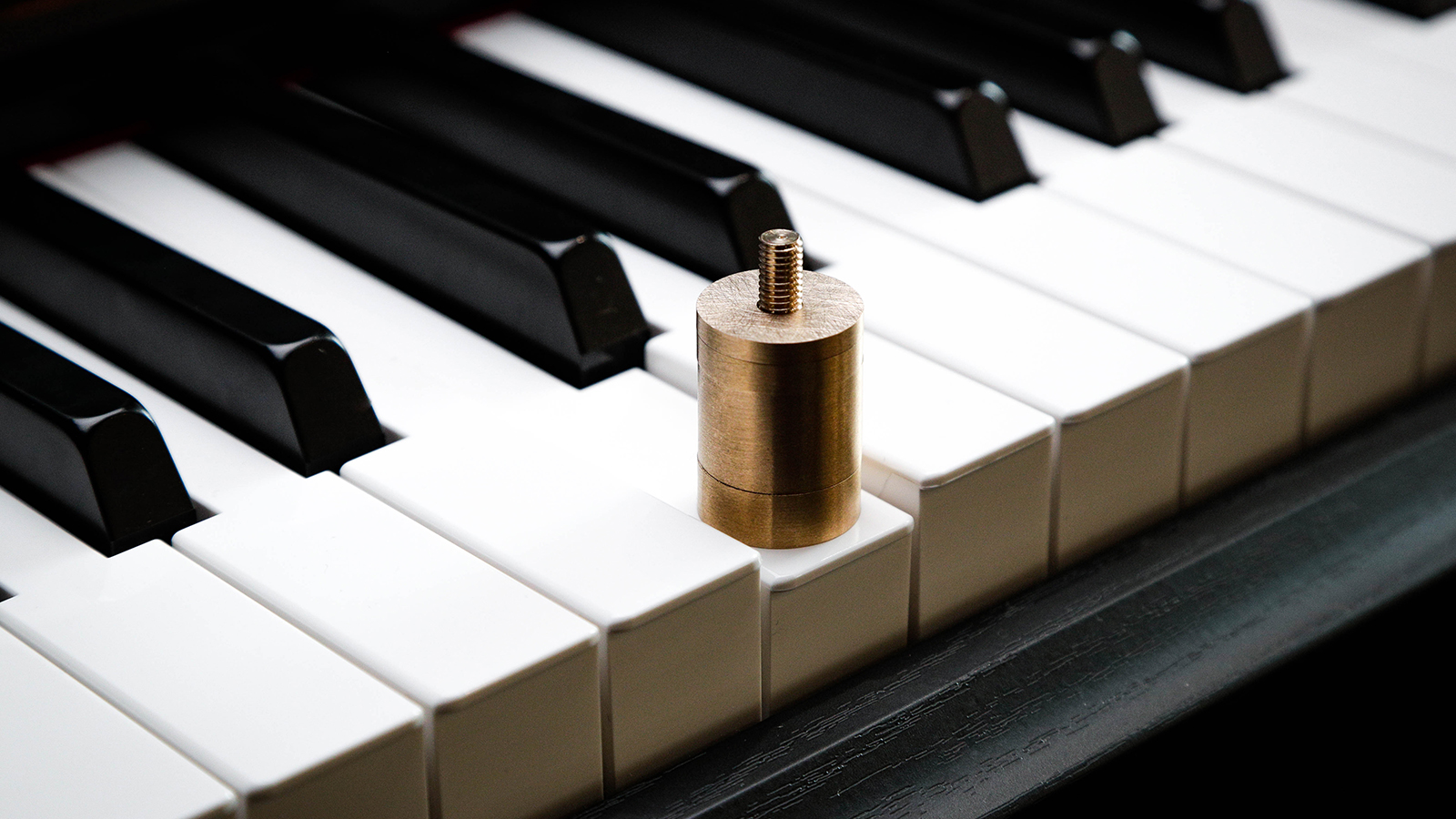
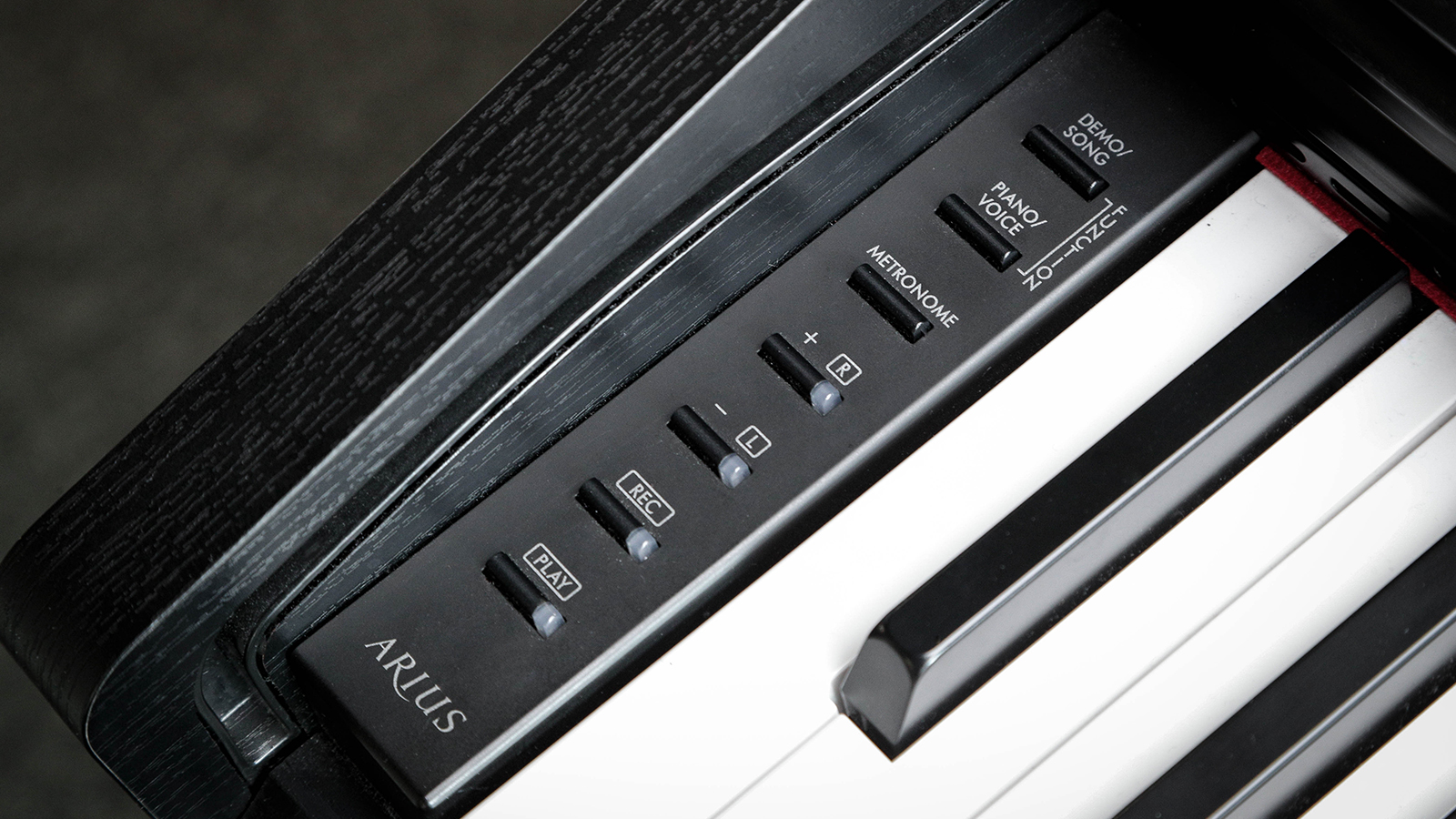
Specifications
Reasons to buy
Reasons to avoid
✅ Buy if you are looking for a reliable piano on a budget: For us, Yamaha makes some of the most reliable instruments in the world, and the YDP range proves you don't need to spend a fortune to get a dependable piano.
❌ Avoid if you need Bluetooth: Unfortunately, the YDP-145 doesn't have Bluetooth functionality.
Build: Yamaha’s Arius range of digital pianos sits below the Clavinova range in terms of features and affordability, and as such, is the number one choice for piano teachers, students or anybody else who wants a great-sounding, compact digital piano that isn’t going to break the bank or overwhelm the space in the room. As you'd expect from Yamaha, the YDP is very well put together, and thankfully, it's an easy piano to assemble, too.
Sound: The successor to Yamaha’s incredibly successful Arius YDP-144, the YDP-145 is the cheaper of the two full-sized models in the range. The main reason for the Arius’ popularity is a stunning main piano sound derived from a real, top-of-the-line Yamaha CFX acoustic grand piano, mated to a brilliantly playable Graded Hammer Standard keyboard. These were the two standout features in our tests.
Performance: There’s no Bluetooth on board and only 10 sounds to get to grips with, but you do get all the other essentials - an elegant sliding wooden keyboard cover, folding music desk, two headphone jacks and three pedals - in a choice of White, Rosewood & Black cabinets. Overall, the YDP-145 delivers the authentic piano experience you'd expect from Yamaha in spades.
Test | Results | Score |
|---|---|---|
Playability | Nice smooth playing action | ★★★★☆ |
Sounds | Classic Yamaha sounds | ★★★★★ |
Features | Lacks features | ★★★★☆ |
Overall | Overall, this is a fantastic slimline piano, but it does lack features | ★★★★☆ |

"I would have no hesitation recommending the Yamaha YDP-145 to anybody from beginners to students or seasoned pros who want a neat, unobtrusive and extremely enjoyable instrument from a legendary brand."
Read more: Yamaha Arius YDP-145
Best beginner piano
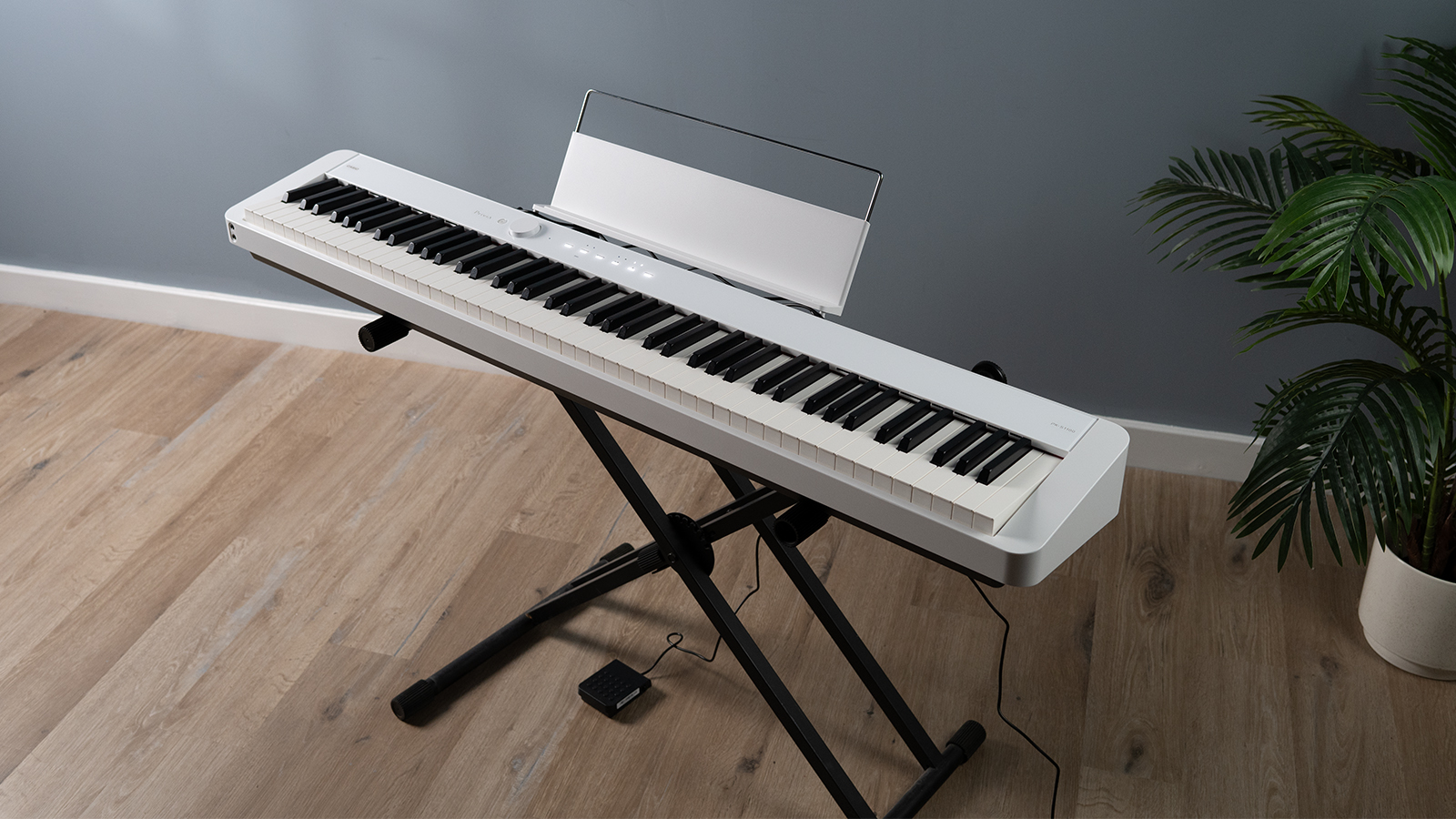
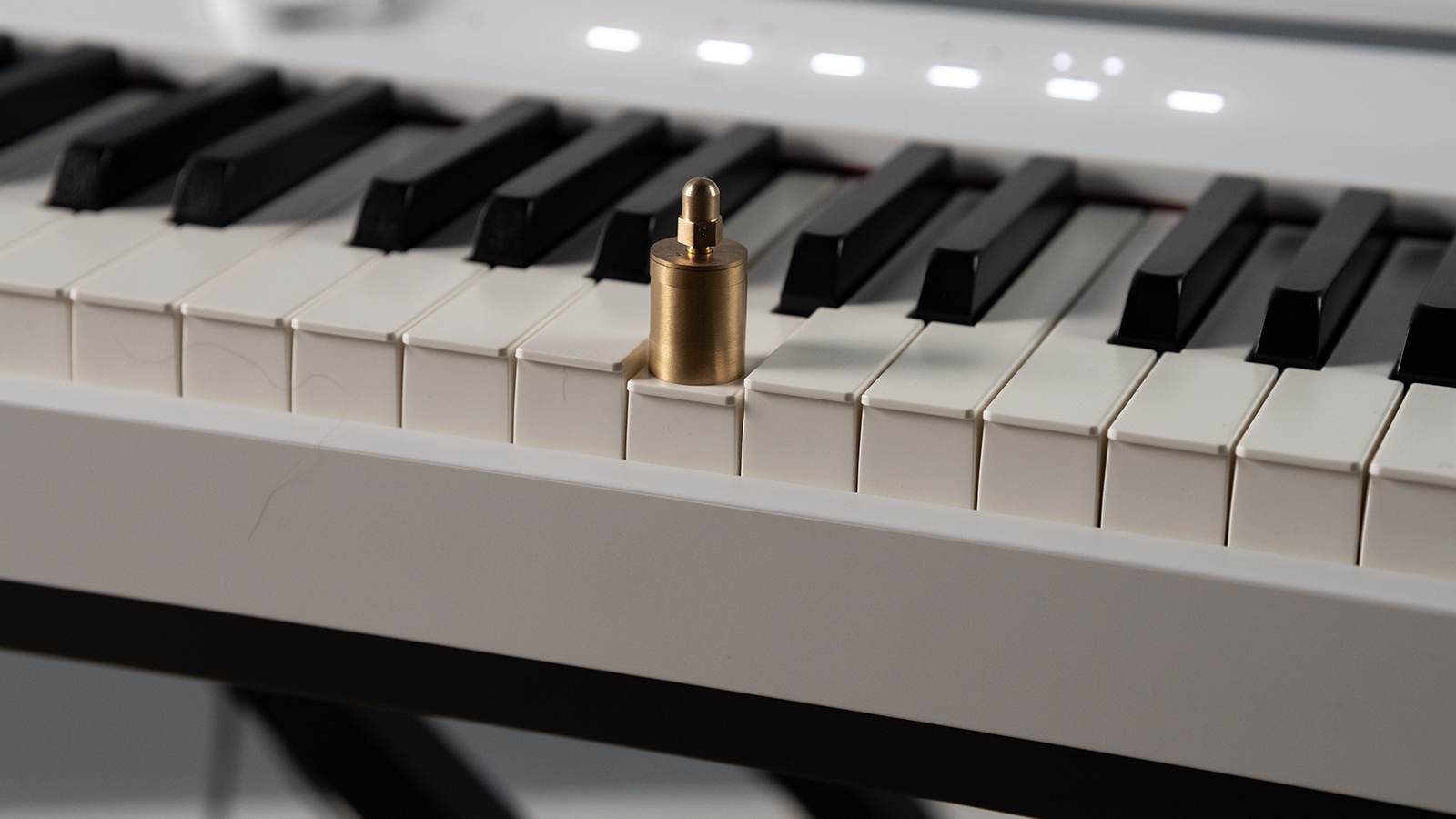
Specifications
Reasons to buy
Reasons to avoid
✅Buy if you want a slim piano: This Casio is about as slim as pianos get, so if you're limited on space, this is the piano for you.
❌Avoid if you like editing sounds: Unfortunately, this piano doesn't allow you to save user-edited sounds.
Build: The highly anticipated upgrade of the S1000, the new PX-S1100, enhances its predecessor by incorporating the modern features that today’s aspiring pianists crave. This 88-note, fully weighted key piano is ideal for those seeking an affordable instrument that does not compromise on quality. The one word to describe the appearance of the S1100 is sleek. The glossy finish and subtle display result in a rather handsome-looking piano that is modern and contemporary.
Sound: With an upgraded speaker system, the PX-S1100 offers a significant improvement over its already excellent predecessor. I must admit, I was very impressed with the tone produced by this rather small piano. With a clear and punchy sound it's also surprisingly loud. The bass response is most impressive, especially when you consider how small the cabinet is.
Performance: A standout addition to the PX-S1100 is its capability to stream audio and MIDI wirelessly with the included WU-BT10 USB adapter. This innovative feature can transform your practice sessions, allowing you to play along with your favorite songs and access popular online piano lessons effortlessly.
If you’re in search of an affordable, durable piano equipped with smart connectivity, the Casio PX-S1100 is an excellent choice.
Test | Results | Score |
|---|---|---|
Playability | Beginner friendly action is good but basic | ★★★★☆ |
Sounds | Good range of tones | ★★★★☆ |
Features | Good features for the price - includes Bluetooth MIDI and PianoRemote app | ★★★★★ |
Overall | Ideal for beginners | ★★★★☆ |
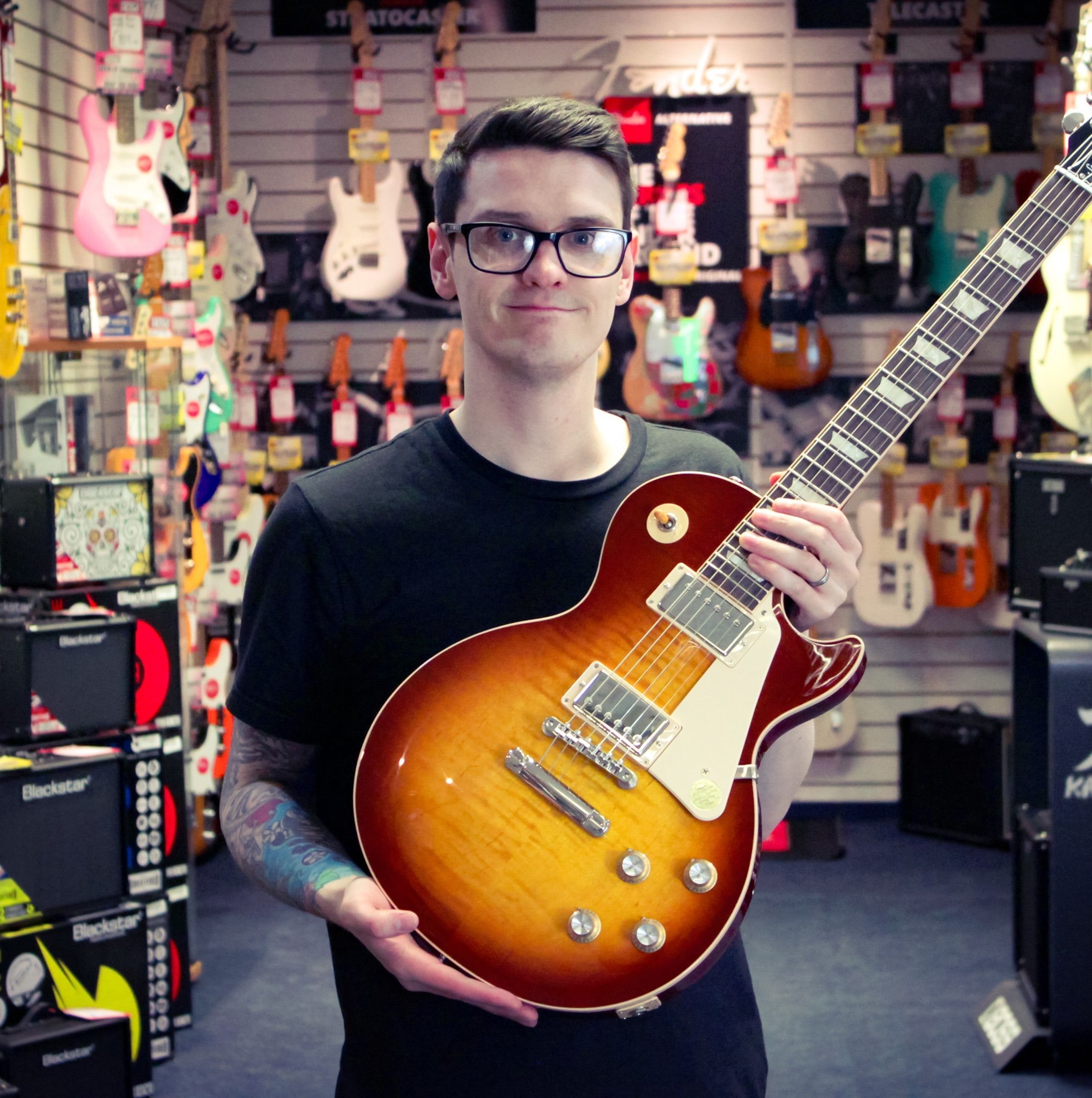
"The Casio PX-S1100 builds on the previous model and brings it into the modern-day with smart features including Bluetooth audio and MIDI, as well as a fantastic new speaker system that delivers stellar sound at an accessible price point."
Read more: Casio PX-S1100 review
Best on a budget
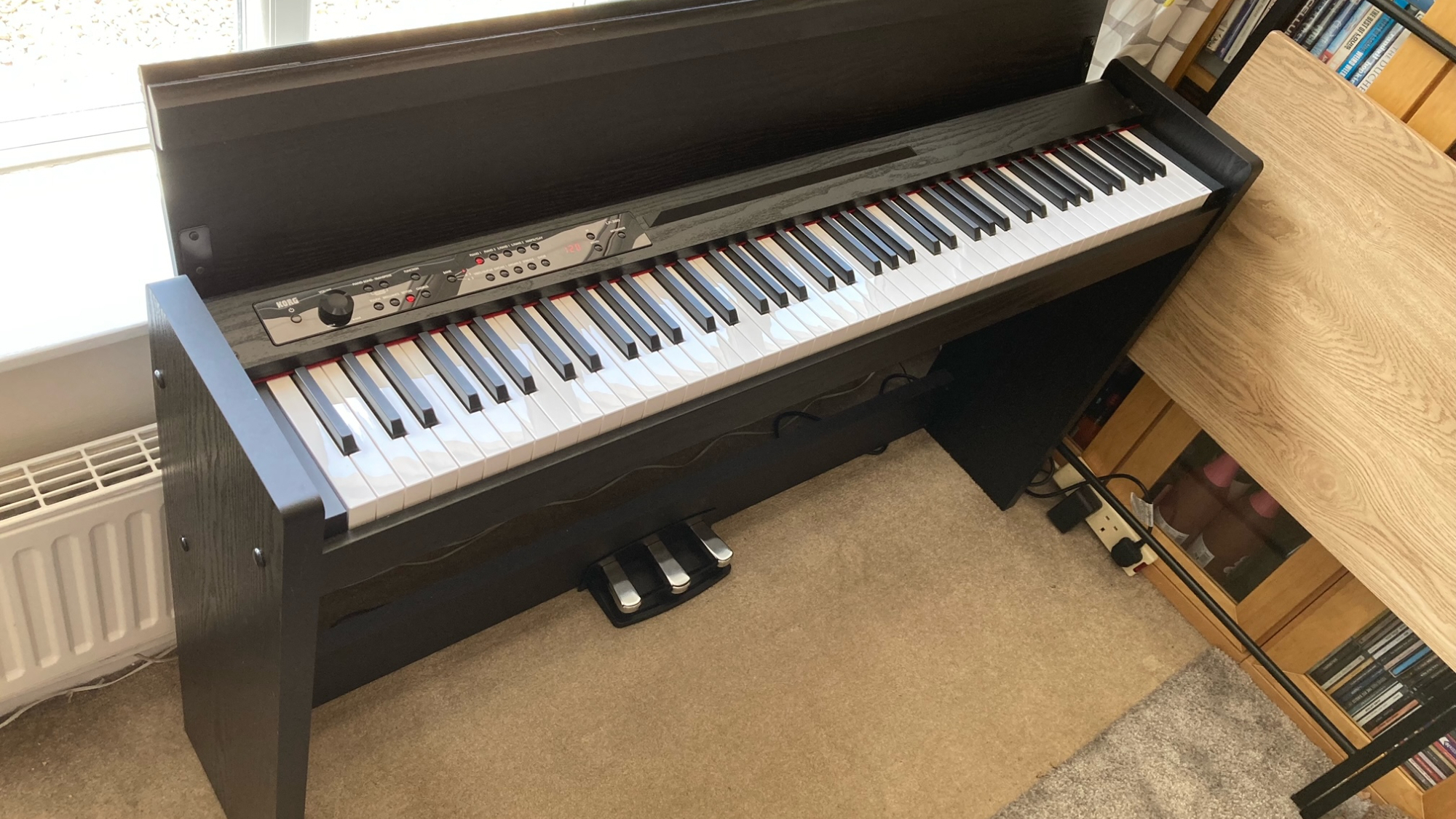
Specifications
Reasons to buy
Reasons to avoid
✅ Buy if you need a very shallow piano: With a depth of only 26cm, you won't find a piano much smaller than this. ❌Avoid if you are looking for a robust option: The plastic frame of this piano certainly looks nice, but it does feel a little cheap.
Build: Overall the Korg LP-380U feels very robust and is actually made in Kyoto, Japan. This adds a level of quality not seen in other digital pianos of this style, and while we aren’t massive fans of the plastic base on the foot pedals, the rest of the piano feels top-notch.
Sound: The LP-380 offers healthy 30 onboard sounds divided up into three banks of 10 accessible by the buttons on the front control panel. As you'd expect, there's the usual assortment of acoustic grand piano samples, as well as electric pianos, harpsichords and strings.
Performance: The Korg LP-380U has to be the slimmest option on this list, at only 26cm in-depth, meaning it can be squeezed into the smallest of spaces. Not only is it small, but with the lid closed, it will easily blend into its surroundings, looking more like a sideboard than a piano.
Housed inside this tiny cabinet is the acclaimed RH3 (Real Weighted Hammer Action 3) key action. This superb action is, in fact, graded, meaning all the weight of the keys changes as you move from the lower to the higher notes, just like a real piano. With the addition of the Key Touch Control, you can even select one of three sensitivity settings, so you can perfectly set the touch of the piano to your preference.
Test | Results | Score |
|---|---|---|
Playability | The RH3 keybed is very nice under our fingers | ★★★★☆ |
Sounds | The tone could be better | ★★★★☆ |
Features | No Bluetooth or extra features | ★★★★☆ |
Overall | With a comfortable key action and a neat build this is a great option for those on a budget | ★★★★☆ |

"All in all, the LP-380’s simplicity and ease of use is impressive. It appears to be an effective compromise between affordability, sound quality and depth of features. If all you need is an affordable, no-frills digital piano for the home that you can just switch on, set the volume and play without fuss, and that won’t take up too much space in your living room, the LP-380 more than has you covered, especially if you’re a fan of the Korg piano sound."
Read more: Korg LP-380U
Best hybrid
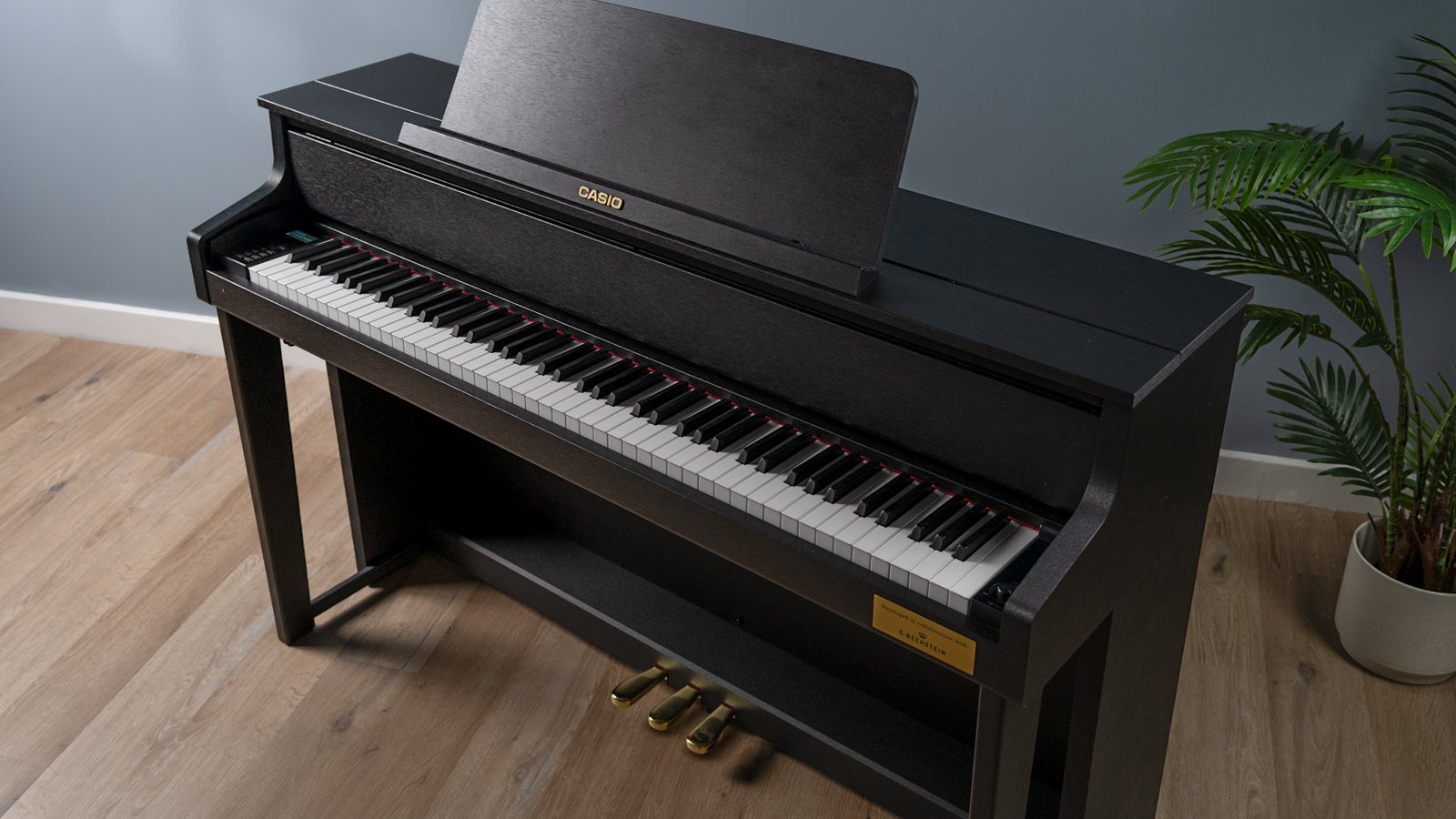

Specifications
Reasons to buy
Reasons to avoid
✅ Buy if you want a real hammer action: This stunning Casio piano features real hammers as part of its action, meaning it feels incredibly accurate to a real acoustic piano.
❌Avoid if you need Bluetooth: Unfortunately, the Celviano GP-310 doesn't have Bluetooth functionality.
Build: Okay, so Casio might not be your first thought for a high-end digital piano, but the Celviano GP-310 may just be the most authentic option on this list. This beautiful piano utilises a real hammer action, which is built in conjunction with one of the most prestigious names in pianos, C. Bechstein, and even uses the same Austrian spruce.
Sound: While this may not have as many sounds as others on this list, the included sounds are sublime. The three main piano voices - Berlin, Vienna and Hamburg - offer a trio of classic piano sounds perfect for almost any situation.
Performance: We absolutely loved the tactile feedback of the hammers moving inside the body of the piano, as it's exactly what you come to expect from an acoustic piano. This feature ultimately leads to a more satisfying playing experience that you don't get on other pianos on the market.
So if you’re in the market for a digital piano with a truly authentic action, then do not overlook the Casio Celviano GP-310 Grand Hybrid.
Test | Results | Score |
|---|---|---|
Playability | Real hammer feel | ★★★★★ |
Sounds | Great range of tones | ★★★★★ |
Features | Lacks features | ★★★★☆ |
Overall | If the feel of hammers is important to you, this is the piano for you | ★★★★½ |

"Casio has done their homework enough to produce an instrument that responds and behaves like a grand piano when you play it, the opening lid and C Bechstein keyboard mechanism making this piano unique amongst its peers. The GP-310 is an extremely capable instrument that should reward pianists of all calibres hugely."
Read more: Casio Celviano GP-310 Grand Hybrid
Best for advanced players
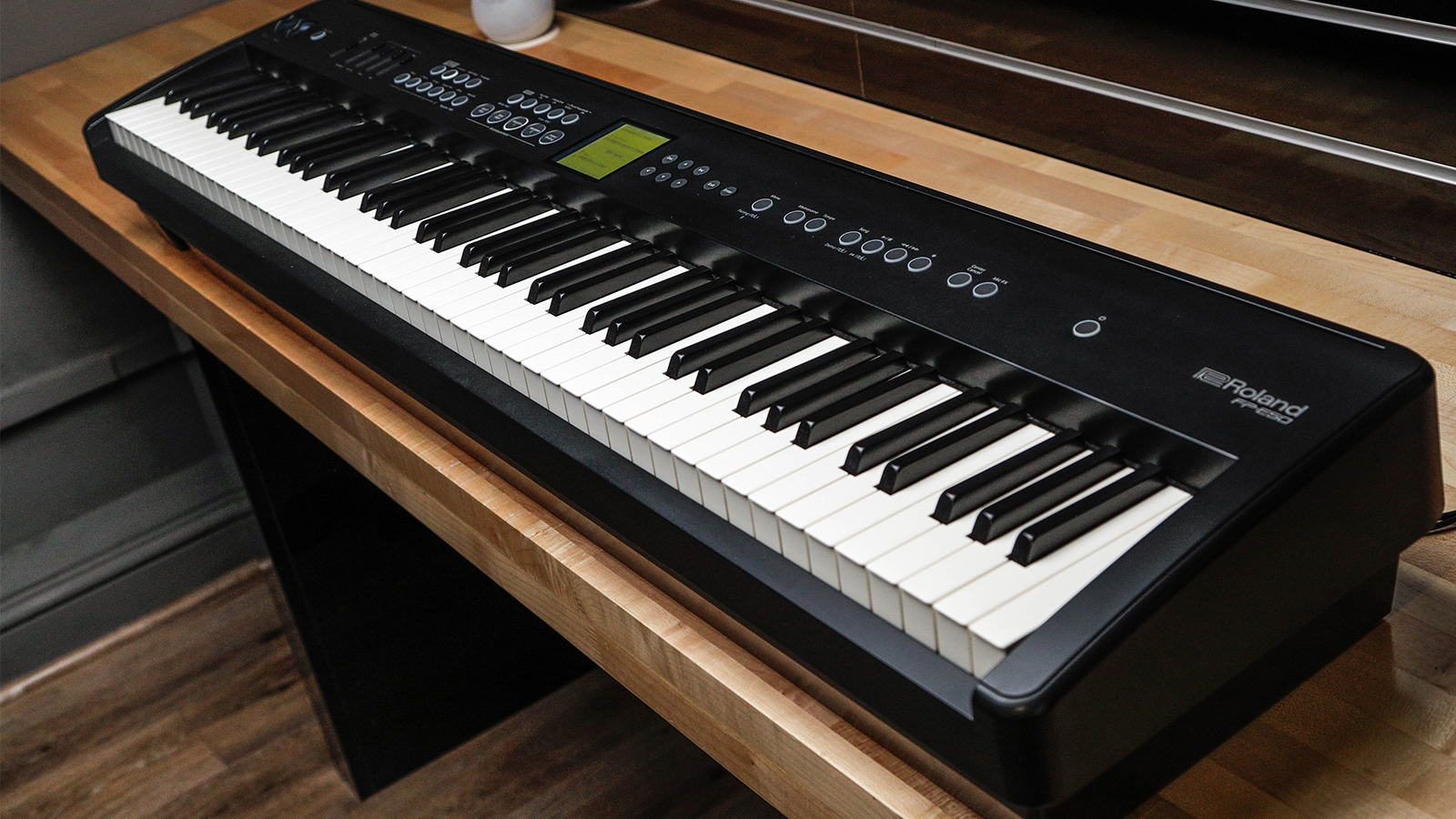

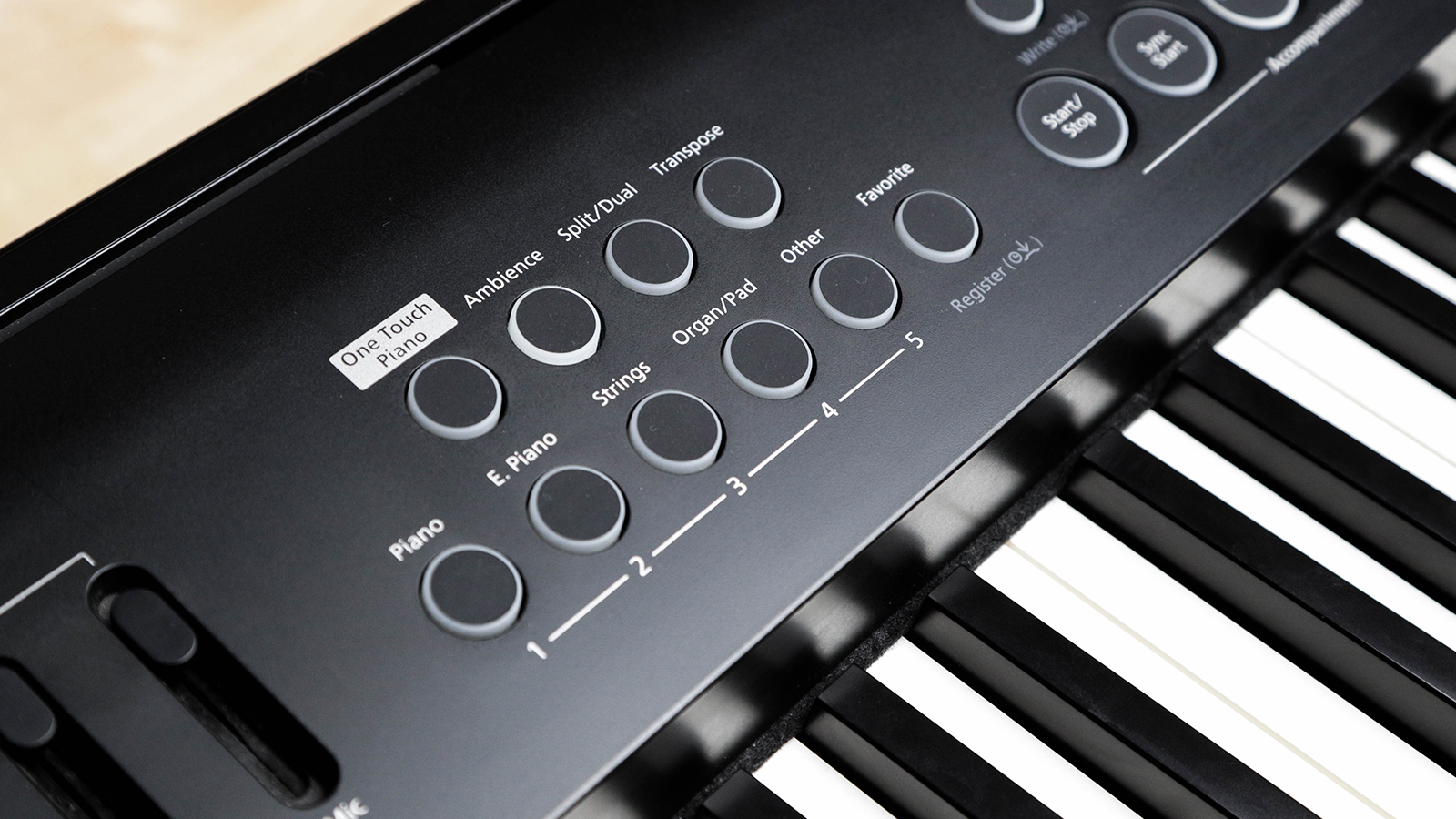
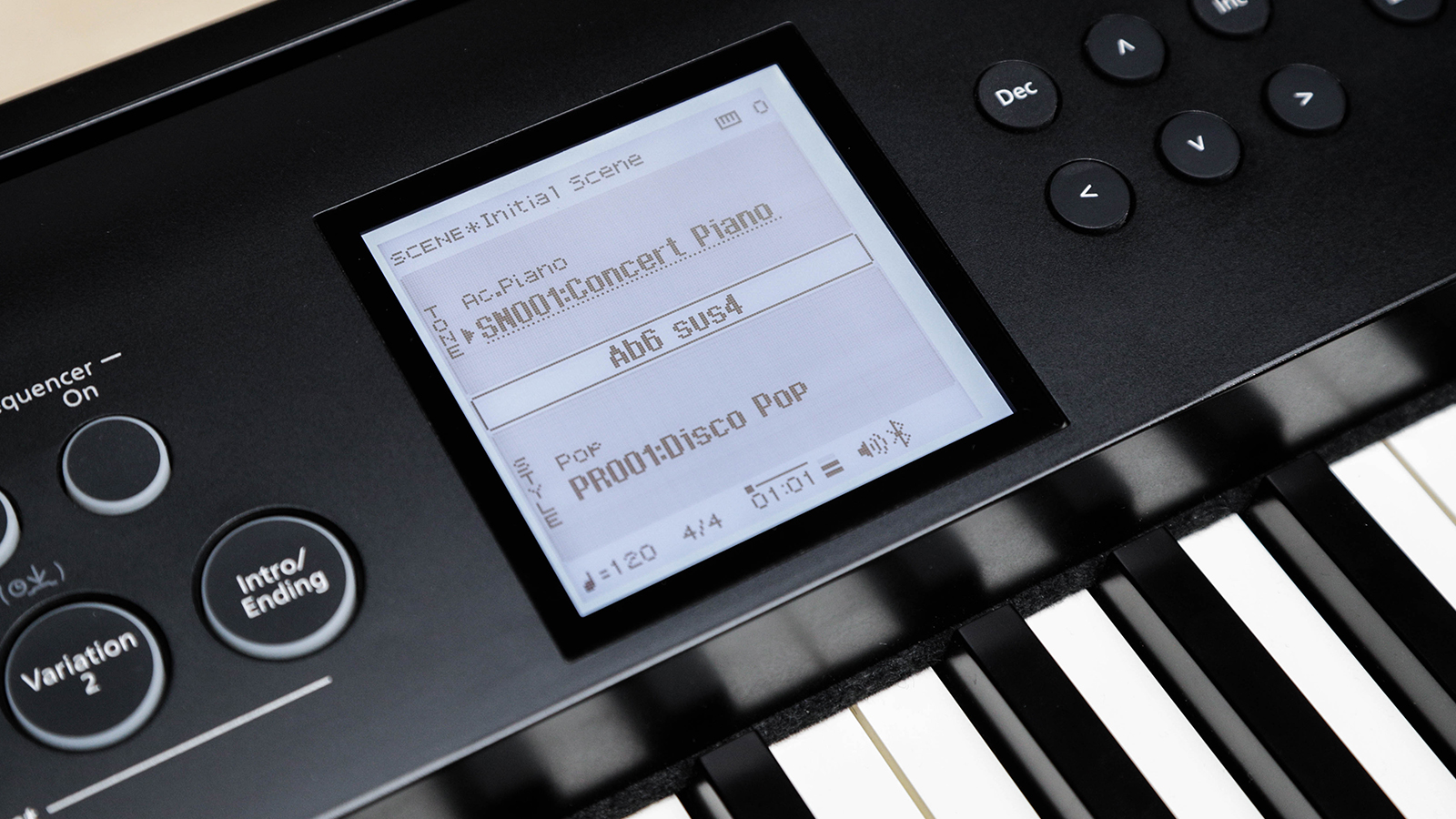
Specifications
Reasons to buy
Reasons to avoid
✅ Buy if you are seeking more than just a piano: With built-in synth sounds and arranger elements this is more than just a digital piano.
❌Avoid if you like things simple: This piano has so many features that it can feel a little overwhelming at times. If you are seeking a basic piano with a just a handful of very usable sounds, we'd suggest looking elsewhere.
Build: From afar, the Roland FP-E50 may look like a reasonably standard digital piano, but get closer and you'll realise that it is way more than that.
The technologically advanced FP-E50 proves why Roland is at the top of their game, delivering an instrument just as comfortable as the home's main piano as it is a powerful synth or even an arranger keyboard.
Sound: The FP-E50 goes above and beyond with its additional sounds. Roland’s latest ZEN-Core engine is in play - yes, it's the same one that’s used in the company’s high-end synths! - and, as well as the expected acoustic and electric pianos, strings, organs and pads, you also get a multitude of modern synth tones and drum sets.
Performance: But don't worry, it still very much feels like a digital piano. Featuring the beloved PHA-4 keybed - with Escapement and Ivory Feel keys - the FP-E50 will happily go toe-to-toe with any other piano on this list.
Test | Results | Score |
|---|---|---|
Playability | PHA-4 keybed again | ★★★★☆ |
Sounds | Stunning range of sounds | ★★★★★ |
Features | More features than you'll ever need | ★★★★★ |
Overall | This feature packed piano is more suited to advanced players | ★★★★½ |

"Maybe not the coolest keyboard in Roland’s roster, but if you value sound quality, ease-of-use and fun, it’s in a class of its own."
Read more: Roland FP-E50 review
Best for contemporary style

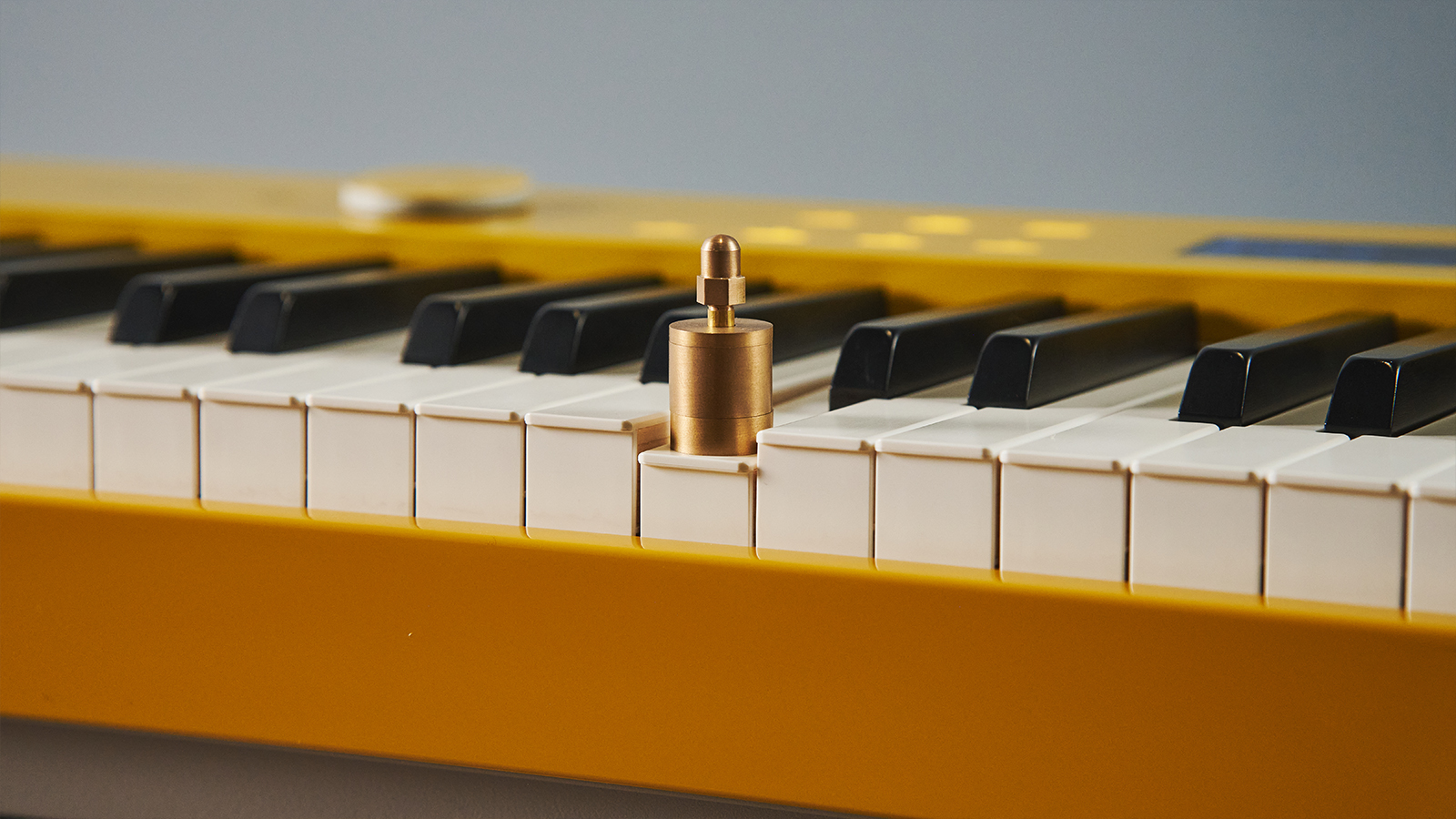
Specifications
Reasons to buy
Reasons to avoid
✅ Buy if you are seeking a modern piano: With a contemporary look and features this is the ultimate modern digital piano.
❌Avoid if you like traditional pianos: This piano's biggest strength is also its biggest weakness. The sleek modern design isn't for everyone and won't look good in every home.
Build: Considering how many digital pianos are on the market, you’d think there would be more variation in the looks department. Unfortunately, most opt to mimic their acoustic counterparts, and while that works for most people, some players are looking for a stylish addition to their home as well as a playable instrument.
That’s where the new Casio PX-S7000 comes in. This sleek and modern instrument is designed to complement your room's decor and even comes in three finish options black, white and the rather striking Harmonious Mustard.
Sounds: The PX-S7000 takes advantage of Casio's Multi-Dimensional Morphing AiR Sound Source to produce its 400 voices. Among the standard piano, electric piano and organ voices, there are also 11 tones designed to sound like the pianos from hit songs, including Coldplay and Adele. When it comes to grand pianos, there are three main voices to choose from - Privia Grand Hamburg, Privia Grand New York and Privia Grand Berlin - with each having its own sonic characteristics.
Performance: Now, it’s not all style over substance, as this piano more than delivers on playability. Casio’s Smart Hybrid Hammer Action Keyboard feels incredibly responsive and offers a very satisfying playing experience, while the Multi-Dimensional Morphing AiR Sound Source delivers a massive range of tones.
Test | Results | Score |
|---|---|---|
Playability | Lightweight action | ★★★★☆ |
Sounds | Good variety of sounds | ★★★★★ |
Features | Needs WU-BT10 adaptor for Bluetooth connectivity | ★★★★☆ |
Overall | If you are seeking a stylish piano that looks as good as it sounds, this is the model for you | ★★★★☆ |

Casio clearly set out to make something different with the PX-S7000HM. This piano casts tradition aside, opting for an extremely stylish and modern look that just begs to be played. Luckily, Casio has the sound and playability to go with this bold new design.
Read more: Casio PX-S7000HM review
Spec comparison
Model | Price | Style | Sounds | Who is it for? |
|---|---|---|---|---|
Yamaha CLP-885 | £4,100 / $6,399 | Upright | 53 Voices + 480 XG Voices + 14 Drum/SFX Kits | Family/ advanced players |
Casio Privia PX-S1100 | £431 / $679 | Stage piano | 18 Tones | Beginners |
Yamaha Arius YDP-145 | £749 / $1,199 | Slimline | 10 Voices | Beginner/intermediate |
Korg LP-380U | £696 / $999 | Slimline | 30 Voices | Beginner/intermediate |
Casio Celviano GP-310 | £2,165 / $4,299 | Digital hybrid | 26 Voices | Family/ advanced players |
Casio PX-S7000 | £1,699 / $2,499 | Slimeline/stage | 400 on-board tones | Beginner/intermediate |
Roland FP-E50 | £669 / $1,169 | Stage piano | 1018 onboard tones | Advanced players |
Glossary of terms
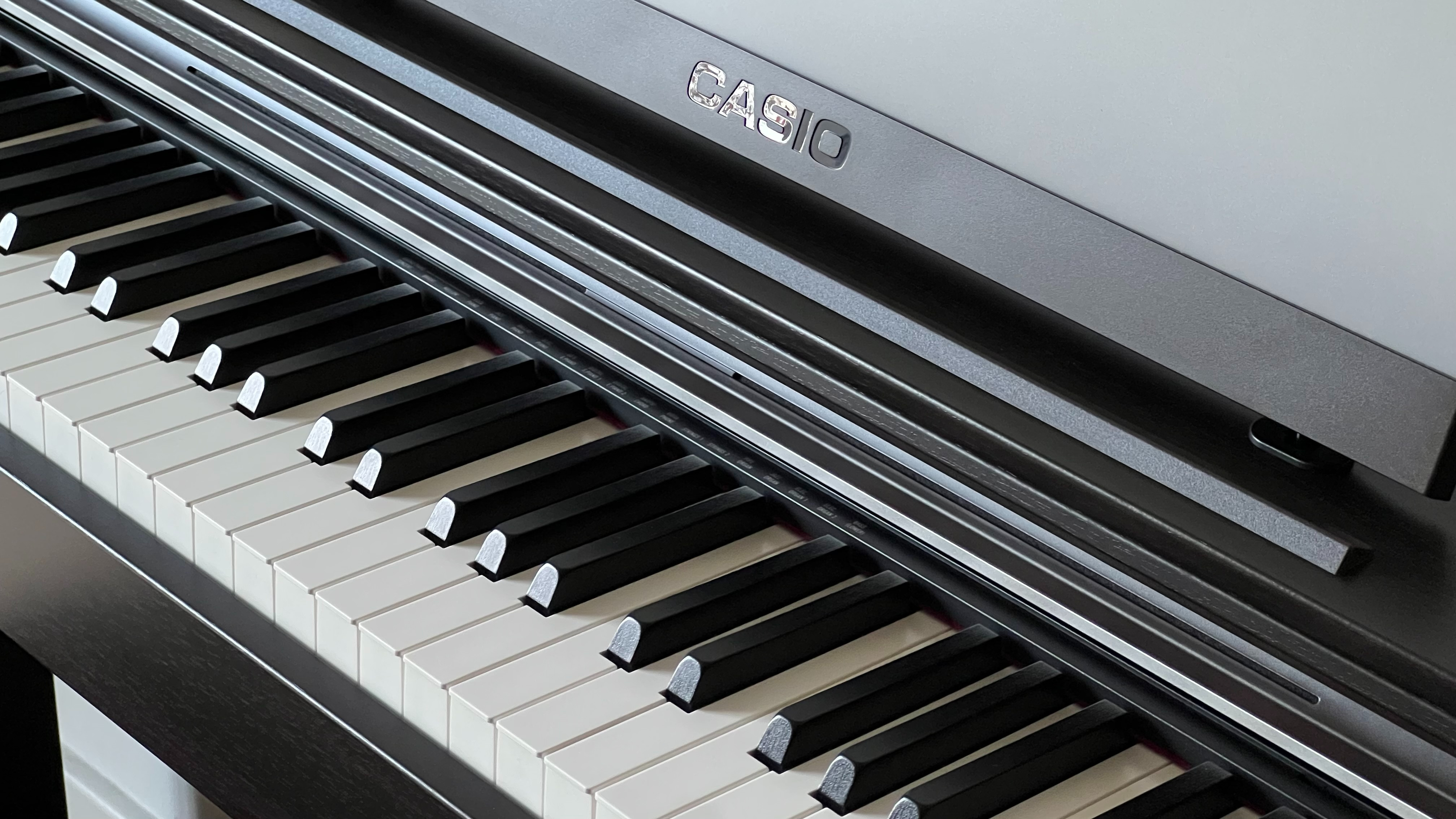
I know that the terms used when talking about digital pianos in this guide can be confusing. So, before I dive into the buying advice, here are the meanings behind common terminology you'll see in this guide and beyond.
Key action refers to the mechanism that controls how the keys of a digital piano feel and respond when played. It encompasses all aspects of the movement of the keys, including weight, resistance, and how it responds. Since digital pianos are designed to provide a more compact and affordable alternative to upright pianos, their keyboards are engineered to replicate the feel and response of an acoustic piano keyboard. When we test a piano, the key action is often the first thing we pay attention to; does it feel organic? Is there enough resistance for expressive playing? Do the keys return quickly enough for fast and technical playing?
Weighted keys, semi-weighted keys, or lightweight keyboard, these terms are often used to compare the keyboards of different piano-like instruments, such as acoustic or digital pianos, to those of synthesisers, portable keyboards, or entry-level pianos. The mechanism that triggers the hammers to hit the strings in acoustic pianos gives the keys more resistance and a slightly slower rebound than a synthesiser. Digital pianos often replicate this feel, with "weighted keys" designed to emulate the natural weight of an acoustic instrument, with lower keys feeling slightly heavier than higher ones. A "lightweight keyboard" refers to much lighter and easier-to-press keys, offering little to no resistance, making them more suitable for synthesisers or keyboards designed for portability and ease of play. A "semi-weighted" keyboard is a middle ground, offering some resistance but less than fully weighted keys, often preferred by beginners.
Hammer action refers to a specific mechanism inside an acoustic piano. Pressing a key causes a hammer to strike a string (in an acoustic piano) or a digital sensor (in a digital piano). Hammer action contributes to the weighted feel of the keys. Hammer action creates a natural resistance and rebound that a high-end digital piano will try to emulate.
Touch sensitivity and dynamic sensitivity are terms often used interchangeably to describe how a piano responds to different speeds and levels of force when a key is pressed. The speed and force with which keys are pressed directly impact the volume and tone of the notes played. A soft touch will produce a quieter, warmer tone, while a harder press will make a louder, brighter sound. The greater the "touch sensitivity," the wider the range for dynamic expression in piano playing. More experienced players will look for more expressive instruments for a broader range of key sensitivity.
Velocity is a term widely used in music production. It refers to the data that translates how a key is pressed and for how long into digital information. The harder the key is pressed, the louder and brighter the note will sound. Simply put, high velocity translates to a louder note, while low velocity produces a softer one. Although you will frequently find the term velocity in music production on a digital piano, it mainly comes into play when customising the instrument's settings. Most keyboards will allow us to adjust the "velocity curve" (also called the "sensitivity curve"), which affects how the keys respond to touch. A linear velocity curve ensures an even response across the keyboard, meaning the volume directly correlates with the pressure applied. A concave curve requires more pressure to achieve louder, brighter sounds, making it ideal for softer, more expressive playing. On the other hand, a convex curve allows for louder, brighter sounds with less effort, which tends to be ideal for pop music.
Polyphony refers to the number of notes a digital piano can play simultaneously. We will often find in the specs list of a digital piano that the polyphony is listed as 192, which means that it is possible to play 192 notes at the same time. But what is the point if a piano only has a maximum of 88 keys? Well, suppose we hold the sustain pedal and play lots of notes. In that case, the polyphony will matter because it will dictate how many notes we can play before they disappear and are replaced by the newly played notes. Although it is very unlikely you will ever reach the 192 limit, the number of polyphony will add to the realism of the instrument.
Modelling technology is an advanced method that digital piano makers use to simulate how an acoustic piano produces sounds. The modelling technology will focus on recreating the resonance when sound travels through an acoustic piano. But also how strings vibrate and the different harmonics that naturally happen in a real piano, which add to the instrument's timbre and tone. Through clever engineering, digital pianos now emulate the different sonic interactions that occur in pianos.
Sampled sound refers to the method of recording used to craft the different sounds available to play on digital pianos. To offer an immersive and realistic experience, each note is carefully recorded or sampled at different dynamics and playing styles so that the way we play on the keyboard will trigger the different samples, resulting in more organic playing.
Voices/tones are the different sounds available to play on a digital piano. For example, you will find a piano voice, often several e.piano voices and many others.
The sustain pedal is the most used of the piano pedals. You might have noticed that pianos have pedals, and the one on the right is called the sustain pedal. Its function is to hold the notes for longer for more emotional playing. You might sometimes find it called "Damper" or "Damper Pedal". This is because its mechanical function is to lift the dampers off the piano's strings to let them ring. Acoustic pianos have little bits of wood and felt that sit against the strings so they don't ring. When we press a key, those dampers lift to let the string ring and fall back to stop it from ringing too long. So, the sustain pedal helps us control the length of notes that can ring. It is an essential part of the piano.
The soft pedal and the sostenuto pedal are the other two pedals you might find on a digital piano. The soft pedal, sometimes called "una corda", is the left pedal. On an acoustic piano, it shifts the hammers slightly to the left or right, pushing them to strike only one of the multiple strings given to each note. You might not be aware, but pianos have more than one string per note: high strings will have three, strings in the middle will have two and low strings just one. By only hitting one string, the notes will sound a lot softer. Many classical pieces will call for the soft pedal to be used. The sostenuto pedal, found in the middle, is often featured on grand pianos and will only sustain the notes held down when we press the sostenuto pedal. This allows for even more control and selection of sustained notes. Many digital pianos now come with all three pedals to offer an authentic grand piano experience.
Damper resonance refers to the natural acoustic resonance that happens when we play with the sustain (damper) pedal held down. By pressing the sustain pedal, every string in a piano will be free to vibrate, so all sorts of harmonic resonance occur, adding to the instrument's richness. In recent years, the modelling technology for damper resonance has increasingly been delivering impressive and immersive results.
Reverb is the term used to designate the digital recreation of the sound of a room. Digital pianos often come equipped with different room emulation that we can select and sometimes customise, allowing us to play in large rooms like churches and concert halls and more intimate piano bars and studio booths. Playing a digital piano can be such an incredibly immersive experience when using headphones.
Transpose refers to the ability to shift the keyboard's pitch. For example, transposing +1 means moving the pitch of the notes up a semi-tone. Simply, it means that playing the note C on the piano will sound like C#. This function is very commonly found in digital pianos. It allows players to easily change the key of a song without having to relearn the piece, which can be very useful when accompanying singers. If you learned a song in C major but the singer feels more comfortable singing in C# major, you can simply use the transpose function and shift +1 and play the piece the way you learnt it!
How to choose a digital piano
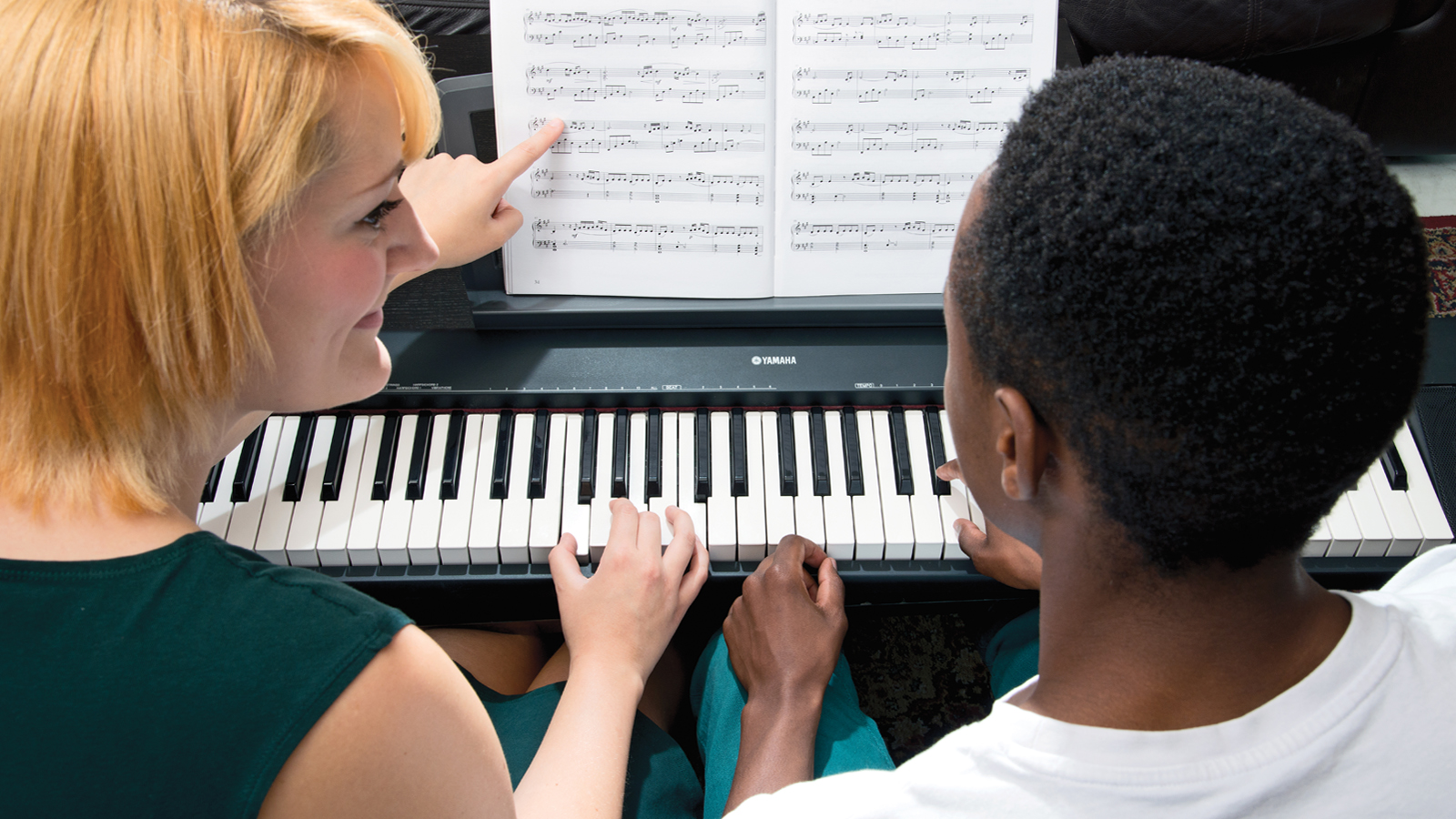
First and foremost, you need to consider the size of your space. Digital pianos come in various shapes and sizes, from slimline units that will most likely fit in any room to upright pianos that look just like the real thing. So, measure the space before you make a purchase.
Next, you need to think about the key action. This is how heavy - or light - the keys feel to play. Now, there are no rules here, pick an action that feels right to you. If you feel more comfortable on a piano with a light touch, that’s fine. At the end of the day, the more comfortable you feel, the more you’ll play!
Lastly, consider extra features. You may want a digital piano with built-in Bluetooth to connect to your smart device, or perhaps you need two headphone outputs for lessons. Each piano brand offers a unique set of features, so make sure you look into these before you buy.
Want to know more? We answer common digital piano queries in our digital piano FAQ.
FAQs
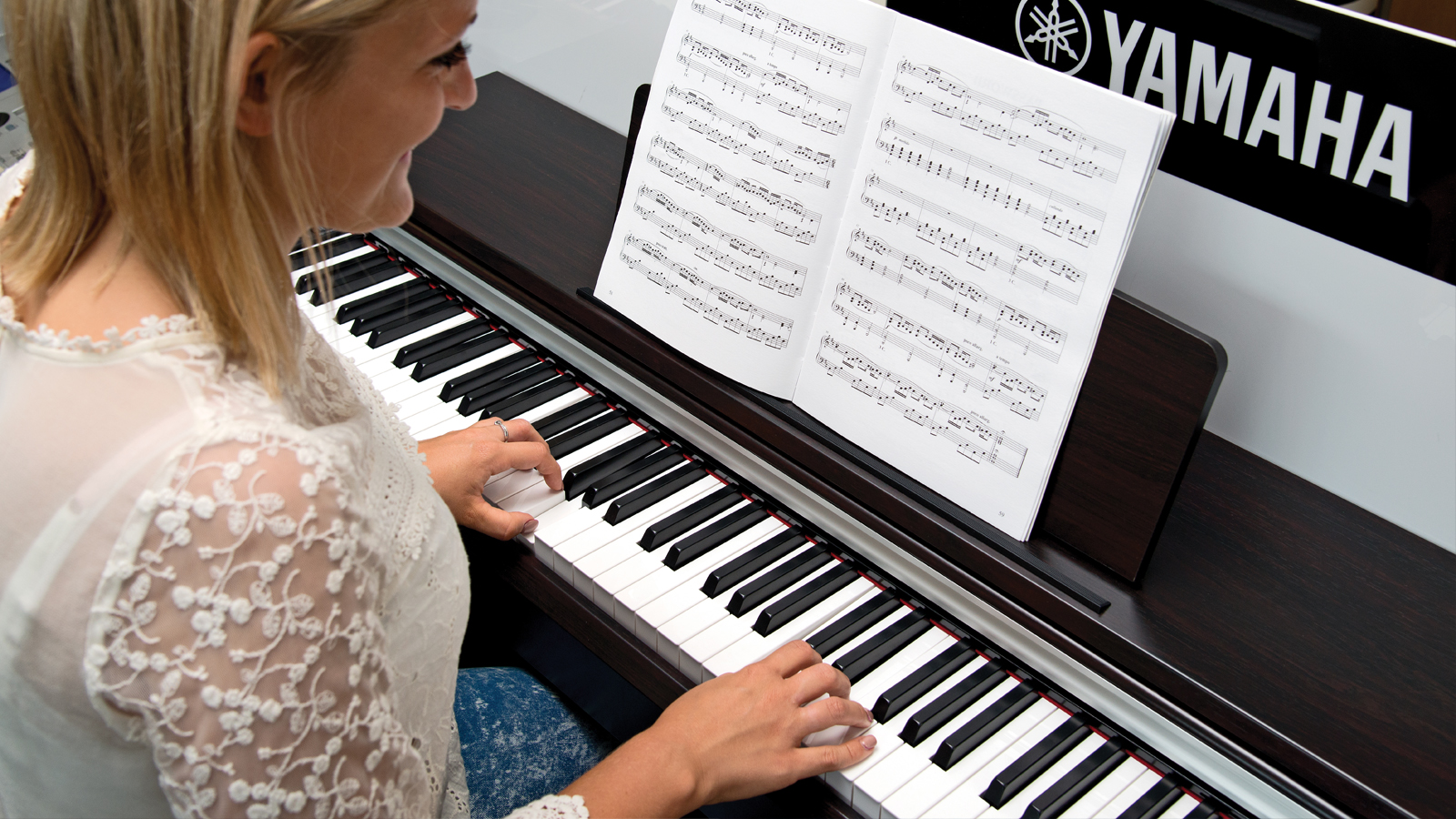
What are the benefits of choosing a digital piano?
Believe it or not, there are still some people out there who think that to learn the instrument “correctly”, you have to play an acoustic piano. While this outdated opinion may have been correct 20 years ago, the truth of the matter is, digital pianos have come a very long way since then, with some of the high-end models being indistinguishable from the real thing.
The most obvious positives are digital pianos don’t have to be tuned - saving a lot of money over the lifetime of the instrument - and are way easier to move around!
Going digital opens players - new and old - to a whole host of features you simply can’t get from an acoustic instrument. From headphone outputs for silent practice, built-in metronomes to help you keep the beat, on-board recorders for tracking progress and a slew of different tones, these state-of-the-art instruments can make learning the piano fun and more engaging.
What's more, many digital pianos can be hooked up to a computer or tablet via a cable or Bluetooth connection (or sometimes both) and used as a MIDI controller or for interacting with online lessons. Read our guide to connecting a digital piano to a computer to find out how.
Should I order a digital piano online?
For some people, the thought of buying a piano online terrifies them. Well, really, it shouldn’t. Yes, pianos are bulky items, but most - reputable - retailers have services in place for delivering and sometimes building your new piano, although this can cost extra.
So what can you expect when your shiny new piano arrives at the door? Well, it should go without saying that the boxes the pianos come in can be rather large, so it’s worth making sure you have some help to get the box in the house. Most digital pianos can be moved with two people, but a third person won’t hurt if you are worried.
Once you’ve successfully navigated your way inside with the piano, the next part is very straightforward. The pianos come flat-packed and are a breeze to build - it’s just like putting together flat-pack furniture. You aren’t actually building the entire piano, only the legs and pedalboard. So there really isn’t anything to be put off by. Again though - like assembling a set of drawers - it’s best to have a helping hand as it will make life easier.
Find out more in our guide to ordering a piano online.
How much should I spend on a digital piano?
As you can see from this guide, a digital piano can vary wildly in price, with very basic options starting in the hundreds and premium, all-singing-all-dancing instruments costing thousands. Now, how much you decide to pay, will largely come down to the features you want, how accurate you want the key action to be, and lastly, what aesthetic you are looking for.
At the beginner end of the spectrum, there is a decent level of choice, with budget brands such as Donner, Thomann, and Gear4Music producing entry-level instruments for under $/£500. However, you’ll have noticed that we have not recommended any of these products in this guide, as we strongly believe that, if you pay a little more - $/£500+ - you’ll bag a much better instrument. This price range grants you access to very respectable pianos from Yamaha, Casio and Korg, and frankly, the build quality of these instruments is far superior when compared to the likes of the budget brands. For more information on cheaper pianos, be sure to check out our guide to the best digital pianos under $1,000/£1,000.
For intermediates and pros, you’ll be looking at a piano in the thousands, with the average being around $/£2,000. At this price point, you don’t just get an instrument but a piece of furniture that will become the focal point of any room. Pianos in this category will offer the most authentic key action and, therefore, feel indistinguishable from their acoustic counterparts. Again Yamaha, Roland, Korg, Casio and Kawai all offer absolutely stunning pianos for this budget, in various styles.
Lastly, if you want a baby grand or full-size grand, you’ll pay considerably more. Baby grands start from around $/£4,000, with the larger grand pianos setting you back $/£8,000+.
What accessories do I need for my digital piano?
When you purchase a digital piano, there are a few accessories you mustn’t forget to add to your basket. The first - and most obvious - is a piano bench. Now, most pianos won’t come with one as standard, so unless you want to stand like a young Elton John, you’ll want to make sure you pick one up. There are a bunch of different stools on the market, from benches with added storage, height-adjustable options and small foldable variations. So take time to think about which would best suit your needs. If you’re not sure, you can always check out our guide to the best piano benches for more advice.
Next up is a set of headphones. Obviously, one of the benefits of going digital is the ability to practice in silence, and a great quality set of headphones will ensure you hear your new piano in all its glory. Again, there are many different styles available to you, with both open and closed back options having their advantages. So if you’re not sure what cans are best for you, check out our guide to the best headphones for digital piano.
If you want to do further reading into must-have items for piano, then be sure to check out our essential piano accessories guide, where we go into more detail.
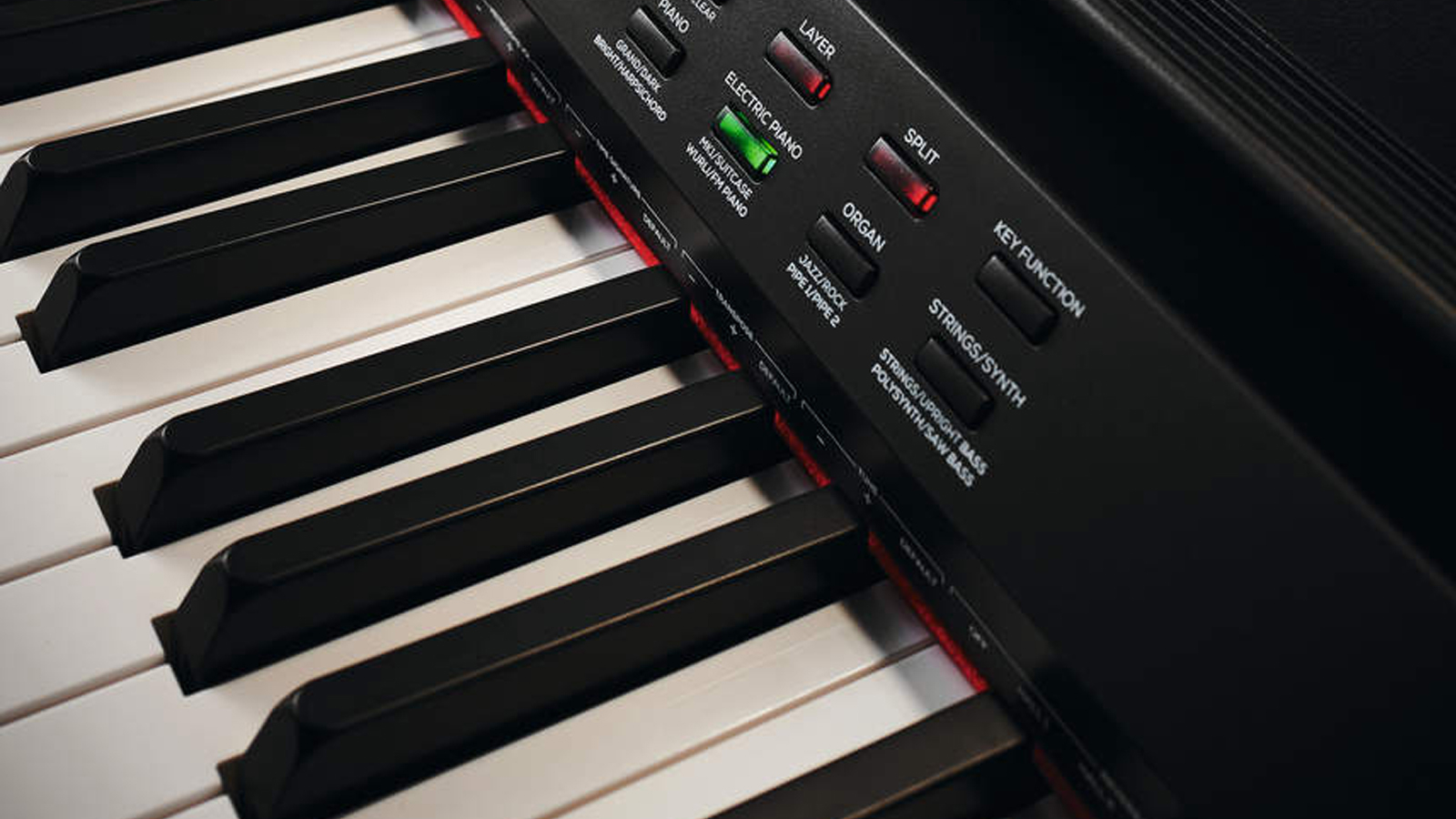
What do the 3 pedals on a digital piano do?
A modern digital piano typically has three pedals, which are located at the base of the instrument. These pedals are designed to mimic the effects of the trio of pedals found on a traditional acoustic piano.
Damper pedal: This rightmost pedal is the damper pedal, often known as the sustain pedal. Pressing down on this pedal lifts the dampers from the strings inside the piano, allowing them to vibrate freely. This creates a sustained sound that continues even after you release the keys. Of course, there are no dampers to lift in a digital piano, so the sustain is created virtually.
This is easily the most used out of the three pedals, and for stage pianos with only one pedal, it is typically the only one included.
Soft pedal: This is the leftmost pedal, and it is also known as the una corda pedal. When pressed, the soft pedal shifts the position of the hammers inside so they only strike one or two strings per key instead of the usual three.
This creates a softer and more muted sound, which is especially useful for playing quietly or creating a more delicate, nuanced sound. Some digital pianos also have a half-pedal function, which allows you to vary the degree of softness depending on how far down you press the pedal.
Sostenuto pedal: The sostenuto pedal sits in the middle of the other two and is probably the pedal that causes the most confusion. When pressed, this pedal sustains only the notes that are being held down at that exact moment. This allows you to play new unsustained notes over the original sustained ones. The sostenuto pedal is not used as frequently as the damper and soft pedals, but a few classical pieces take advantage of its unique sound.
Overall, the three pedals on a modern digital piano allow you to create a wide range of dynamic and expressive sounds, just like on a traditional acoustic piano and if you want to unlock the full potential of your instrument and create music that is both beautiful and nuanced, you’ll want to get to grips with what each of them do.
How do I match a digital piano to my room’s style?
MusicRadar's got your back
As an experienced digital piano sales professional, I’ve helped countless customers find the perfect instrument - not just in terms of sound and features but also in aesthetics. A digital piano is more than a musical tool; it’s a piece of furniture that should complement your home’s style.
Here’s an in-depth guide to ensuring your piano enhances your space. -
1. Consider Your Room’s Overall Style
Before choosing a digital piano, take a step back and analyse your room’s design. Here’s how different styles influence your piano choice:
Modern and minimalist homes: Matte black, white, or sleek high-gloss finishes.
In my opinion, clean lines, subtle curves, and neutral colours match a minimalist aesthetic the best. Look for a slim cabinet with hidden controls to keep things looking neat and tidy.
Classic and traditional homes: Dark wood tones like rosewood, mahogany, or walnut.
Simple, timeless pianos with wooden textures and traditional cabinet designs blend well with antique or classical interiors.
Rustic and farmhouse styles: Light wood and natural finishes.
Soft, organic tones work well in farmhouse aesthetics. Opt for a lighter wooden stand, and in my opinion, it's best to avoid glossy finishes.
Elegant and luxurious styles: Polished ebony or polished white.
These finishes give a sophisticated, high-end look that enhances elegant interiors.
2. Choose the right size and shape
The size of your piano should complement the scale of your room.
Small Spaces: Compact models like the Roland FP-30X or P-145 fit well in apartments without overwhelming the decor.
Medium Rooms: Console-style pianos, such as the Yamaha YDP series, blend well with standard-sized living rooms.
Large Spaces: Upright digital pianos such as the Yamaha CLP-885 or Casio GP-310 will work in larger living rooms, becoming the focal point of that space. Of course, if you have a very large room, you'll want to consider an even larger instrument - a grand piano is sure to add a touch of class and grandeur to expansive rooms.
3. Consider your lighting and placement
It's worth remembering that high-gloss finishes reflect a lot of light. This can be overwhelming in certain spaces with lots of natural light. I've found that matte finishes can work better - plus, they are a lot easier to keep clean! Conversely, a dimly lit space can really benefit from a highly polished piano. For example, a glossy white piano can brighten the area and create a focal point.
Read more about styling a digital piano from a professional interior design expert.
Meet the experts
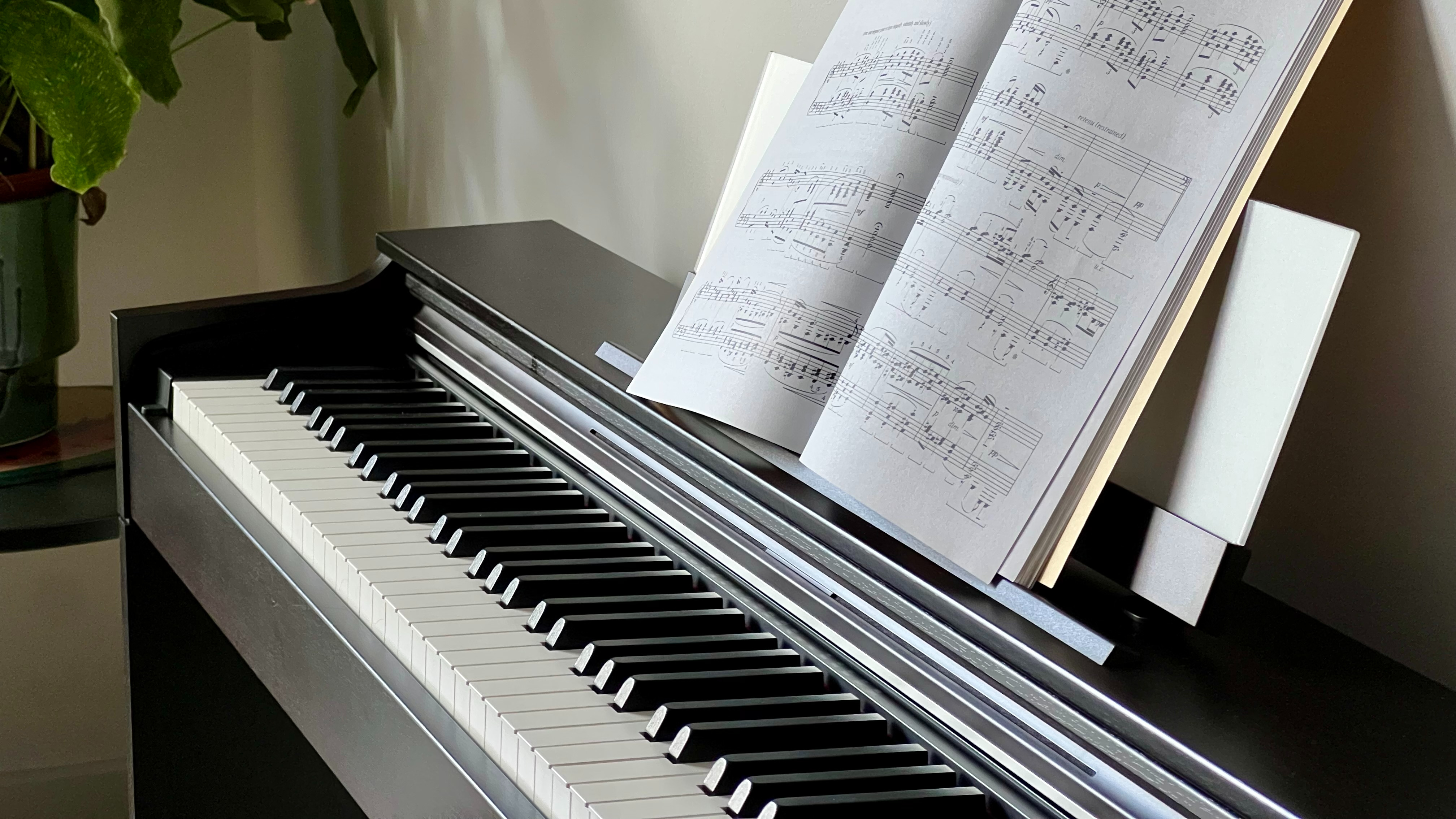
☑️ Established 2007
☑️ 2.9 million monthly users globally
☑️ 9,500+ reviews on-site
With more than 17 years of experience, MusicRadar is the premier music-making website in the world. Run by musicians for musicians, we offer expertly written gear round-ups and high-quality, authoritative reviews by an extensive team of highly experienced industry professionals.
Below you'll find more information on the expert authors of this guide.

Daryl is a Senior Deals Writer at MusicRadar, and is responsible for writing and maintaining buyer's guides on the site as well as testing out products for reviews. Before writing for MusicRadar, Daryl worked for many years in music retail, helping musicians of all ages find the best gear for them. Whether it was a beginner's first keyboard or a top-of-the-range digital piano for the pros, Daryl was there to help steer players in the right direction.

Dave is an expert in all things keys, from beginner keyboards, to digital pianos, synths and beyond, and has been a music technology writer and product tester since 2007, contributing to the likes of Computer Music, iCreate, MusicRadar and Attack Magazine. Dave has also programmed and played keys on recordings by a range of world-renowned artists including George Michael, Kylie and Gary Barlow.

Quentin is a composer specialising in writing for contemporary dance, theatre and film. He is also a classically trained pianist and multi-instrumentalist. One half of trip-hop duo Moon Thrills, Quentin also teaches songwriting to the undergraduate students at LCCM in London. He has a newly discovered passion for sound synthesis and finds it a great way to explore new and exciting ways to develop his music.
How we test digital pianos

It's essential that we put the instruments through several tests to ensure they are worthy of being included in this guide to the best digital pianos. There are so many digital pianos on the market, and only the instruments we rate highly will make it on the list.
When we receive a digital piano for review, we start by asking ourselves the following questions:
- How easy is the piano to play?
- Are the sounds inspiring and varied?
- Is the unit easy to navigate without reaching for the manual?
- Is the digital piano well-made and robust?
- And does the piano offer the user good value for money?
Below you'll find a more detail of our testing criteria.
Playability: The first test - and most important for us - is how the piano feels to play. This is, of course, a combination of the key action as well as the feel of the physical key. To test the key action, we'll first play the piano at various dynamics - and musical styles - to see how the instrument responds. A good digital piano should feel as close to an acoustic piano as possible and most definitely not like a keyboard.
This goes hand in hand with the texture of the keys themselves. The best digital pianos go out of their way to recreate the feel of real ivory and ebony, resulting in a more authentic playing experience.
Sound quality: Next up is the sound. We will carefully go through the list of inbuilt voices while paying close attention to the frequency range of the speakers. A real piano produces a massive range of tones, from extreme lows to fierce highs, and while a digital can't recreate this perfectly, we should be getting close with today's technology. It's also important to try the piano via headphones, as this is how many players will practice.
Features: Next, we will go through any extras included with the piano. The pedals, audio outputs, MIDI compatibility and any accompanying app are all tested to see how they compare to the rest on the market at the respective price points.
Build quality: Of course, we need to examine the piano's overall build quality. It's crucial for the instrument to exude a sense of robustness and solid construction. We also look for pianos to be easy to build and put together.
Value: When evaluating a piano, the last part of the equation is value for money. It's not just about the features and performance but also about whether it's worth the price. We'll carefully combine our thoughts on all the above sections - from design and functionality to performance and sound - and weigh them against the digital piano's price to determine if we think it's worth the investment.
Read more about how we test digital pianos.
About our playing demos
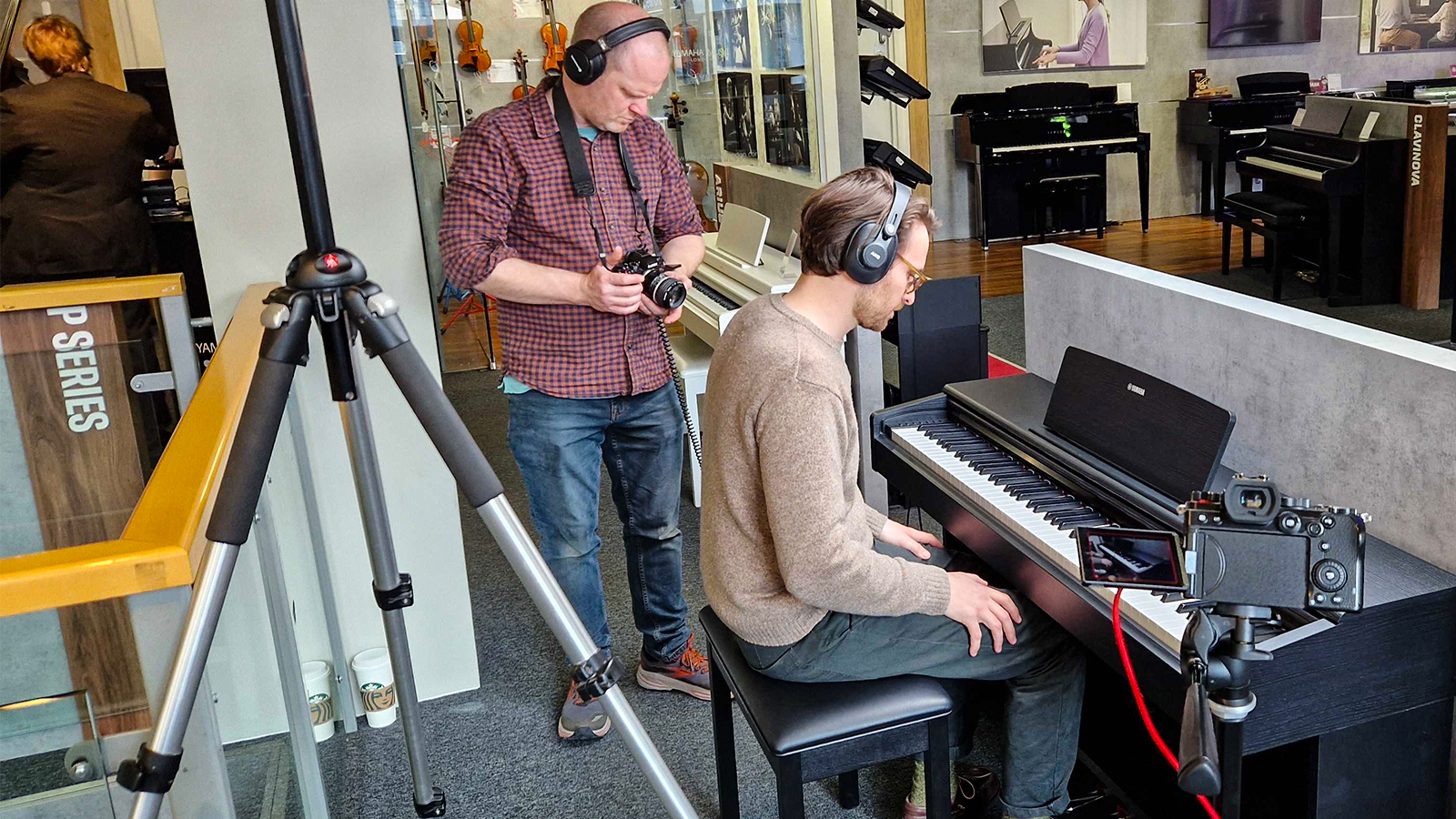
Filming locations
There's no getting around it, most digital pianos are heavy, and that makes them cumbersome to ship. That’s why we have two methods for shooting our playing demos.
When we are filming multiple models from the same brand, it makes more sense to shoot on location at a music store or the brand's showroom. These shoots are uninfluenced by the brand or retailer. This approach allows us to capture video of several pianos at once without the need to transport large instruments across the country.
However, sometimes it isn’t possible to shoot on location, and in those cases, we film at our dedicated photo studio based in Bath, UK.
Capturing the audio
To keep things simple, we perform the same three pieces on each piano. We have composed the music specifically for our demos, designing three distinct pieces to showcase the best of each piano's voice. The audio is captured either through the dedicated line output or via the headphone out. This method keeps the audio clean and ensures it sounds exactly as it would in your own headphones, without being coloured by the acoustics of the filming space.
Post-processing
As you would expect, we do apply some post-processing to the audio once it is captured, but we keep this to a minimum. A little compression is added to help maintain consistent volume levels throughout the demos, but absolutely no EQ or post effects such as reverb are applied. The audio is left sounding as it did during capture, with just enough compression to keep things consistent across different pianos.
Recent updates
17/11/25: To make sure this guide is as up-to-date as possible, a full audit of the product list was conducted. We truly believe that the digital pianos featured are the very best on the market right now, so you can shop with confidence.
18/04/25: We have completely overhauled this page, adding demo videos for each of the Yamaha pianos, new photos, and more in-depth information and clarity to our buying advice section.
21/11/24: We've added a dedicated Black Friday advice section to showcase the amazing Black Friday offers we've found from around the internet.
29/10/24: We have added expert verdicts to the end of each product entry so you can better understand our choices.
Related buyer's guides
- Get started with the best digital pianos for beginners
- Best stage pianos: the finest keyboards for live performance
- Here are the best keyboards for beginners
- 10 of the best pianists of all time
- 8 great beginner piano songs to learn
- How to clean piano keys, step-by-step
- Learn the piano basics
Want all the hottest music and gear news, reviews, deals, features and more, direct to your inbox? Sign up here.

I'm a Senior Deals Writer at MusicRadar, and I'm responsible for writing and maintaining buyer's guides on the site. As part of my role, I also scour the internet for the best deals I can find on gear and get hands-on with the products for reviews. My gear reviews have been published in prominent publications, including Total Guitar, Guitarist, and Future Music, as well as Guitar World.com. I've also had the privilege of interviewing everyone from Slash to Yungblud, as well as members of Sum 41, Foo Fighters, The Offspring, and many more.
In a previous life, I worked in music retail, selling everything from digital pianos to electric guitars. I'm also a fully qualified sound engineer who holds a first-class Bachelor's degree in Creative Sound Production from the University of Abertay.